Kristen Lamb's Blog, page 9
September 24, 2021
Brave New Writing & Learning to Think Outside the Book

Writing is and always has been a dynamic profession. Times change, culture changes, and creators who want to survive have to change, too. I mean, yeah it was probably a tough shift to go from painting cool stories on cave walls to ‘telling’ a story when some know-it-all invented language. Then it probably sucked even more when an even bigger know-it-all invented this stupid thing called the written word.
Don’t even get me started on all the suddenly unemployed monks when that jerk Gutenberg invented the printing press.
Great now EVERYONE could be published *invents beer*
I’ve been blogging since most people thought a blog was an alien creature that melted/ate people.
*ponders* Not entirely inaccurate…
I literally began an early version of a blog on a site called Gather in 2004, then later, began an ‘official’ blog on Myspace. Yes, I am THAT old. I gleaned pretty early on that Web 2.0 and social media would very literally change the world forever.
I was even bold enough to dare posit the idea that novelists would finally have a way of creating a brand and a platform before the book was even finished/available to buy (much like non-fiction authors had been doing for, well, forever).
Writing and the ‘Good Old Days’ See the black dot? These didn’t sell so were “REMAINDERED.’
See the black dot? These didn’t sell so were “REMAINDERED.’First of all, I might have to break some bubbles here. I’ve done it before, but not in a while. Writing has never really had what we might consider ‘good old days.’
As a profession? Writing has always been a meat grinder. Just instead of great-great-granny’s cast-iron hand-cranked meat-grinder, it’s now a meat-grinder Alexa can power via voice command.
I already mentioned I was an early adopter when it came to social media. Granted, I hated it, loathed email, and generally anything techie. That said, I might be a lot of things, but stupid isn’t one of them.
Okay, most of the time.
As early as 2004, I saw a way authors might be able to beat the terrible odds and escape the 93% failure rate. Yes, you read correctly.
As of 2004 (according to statistics from Book Expo of America), 93% of authors failed to sell out even their initial print runs. That used to be around 10,000 books for a first-time author. 93% of authors failed to even sell a thousand books and half that number failed to sell even 500. Most sold fewer than 100.
Only 1 out of 10 published authors ever saw a second book in print.
***Namely because people who couldn’t even sell over a 1000 books were generally considered a bad investment.
Remember, this is back in the alleged ‘good old days’ of publishing.
For those who want a breakdown of how traditional publishing worked, go to The Ugly Truth of Publishing & How BEST to Support Writers.
Anyway…
Even back in the ‘good old days,’ I felt the reason so many authors failed was that they were an unknown commodity. If the stars didn’t happen to align just right, most writers failed because blind luck is just a bad business plan.
When it was the ONLY business plan? Then fine. Once social media popped onto the scene, then ‘blind luck’ went from ‘bad plan’ to ‘just plain stupid plan.’
When I pitched a book about how to use social media just after FB became available to the hoi polloi, an agent literally laughed in my face.
He then explained to me in small words how Facebook and the internet were a fad, just like audio books. Aaaand, the last time I saw him, he kind of ran away from me in the opposite direction.
The Evolution of Publishing
I shifted my blog in roughly 2008 to focus on teaching craft (product) as well as introducing authors to social media (brand). To me, it was obvious that the same digital tsunami that had already erased Tower Records, Kodak, and Blockbuster (to name a few), was heading straight for the Big Six
I blogged until I was blue in the face ways NY publishing could outwit Amazon, namely because monopolies give me hives. I’d grown up with the Big Six and genuinely wanted them to succeed. Yet, while I kept posting all these blogs about needing to update and even suggestions HOW to update? Big Publishing wanted to shake snow globes of ‘1950s New York’ and pretend computers had never been invented.
I love you! Why won’t you LISTEN?Finally, in the summer of 2019 I wrote the blog posts I never wanted to write, Barnes & Noble SOLD: Goliath has Fallen & What This Means for Writers, then Amazon Publishing: The Road to Conquest & How Bezos Razed New York, and a couple months later Penguin SOLD.
Of course, then there was the March 2020 blog post I didn’t have the heart to publish, detailing how and why ViacomCBS was ditching the iconic Simon & Schuster.
We’d already been slammed by the pandemic, and I couldn’t shake the eerie mental picture of all writers simultaneously walking into the sea.
*shudders*
Anyway, according to an article in The New York Times, on March 4, 2020, ViacomCBS announced that, in light of plummeting profits, Simon & Schuster, was no longer essential to its business and that they were officially open to finding a buyer…which they scored in November of 2020.
The parent company, Viacom CBS, sold Simon & Schuster to Bertelsmann SE & CO for $2.2 billion.

Why? Because Simon & Schuster was a financial black hole. ViacomCBS used the money from the sale to pay down its debts and to invest more in streaming content as part of their revised strategic growth plan.
All this to say, I wrote countless blogs trying to get the Big Six to evolve or die.
FYI? They dead.
What Does This Have to Do With Writing?Or rather, what does this have to do with writers? I am speaking in VERY general terms, so don’t shout me down if this doesn’t apply. Two posts ago, we talked about how binging is BIG in the modern world. This is great news for those in the writing profession, for non-fiction and fiction authors alike. People are consuming a crazy amount of information and entertainment.
Writers who wanted to survive and thrive have ALWAYS had to shift with the times. Audiences change. Writing changes.
Hast thou not noticed-eth?
So as not to repeat the history of audience preferences and publishing economics, I highly suggest my VERY tongue-and cheek post Real Writers Don’t Self-Publish. For anyone in need of some more writing encouragement, then feel free to check out Real Writers Don’t Self-Publish Part 2.
Again, I am being sarcastic in these posts, so no need for pearl-clutching.
Here’s where I get tetchy, though.
I GET that writers LOVE the feel, smell, taste of paper. Great! Okay maybe not the taste, that’s kinda weird. We love browsing bookstores and la la la la la. Fantastic, we just sold A BOOK…to ourselves.
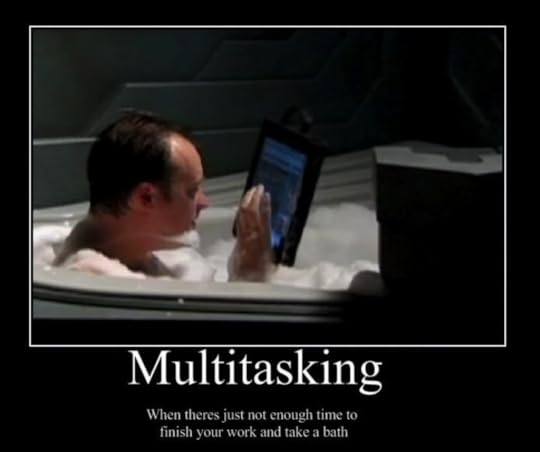
I’ve not had the time to sit down and physically read a book since I gave birth to a child. Like most people, my days are cram-packed even though I have actually learned that ‘No’ is a complete sentence. Despite limiting my commitments, modern life is exhausting.
Between cleaning, cooking, homeschooling, grocery shopping (like almost DAILY because Spawn is 5’7″ despite only being ELEVEN and eats his weight in food), doing the accounting, blogging, writing, editing, on and on? I have almost NO time to sit and read a PAPER book…without risking falling asleep.
I have passwords for my passwords…and have to reset them so many times I finally began paying my bills as a GUEST.
Y’all know what’s super fun? Trying to pay a bill on-line but the site is down? So you call to pay, but then the company keeps you on hold for two hours while an automated voice repeatedly tells you how much easier this could be if you just paid online.
 Actual image of Kristen paying bills.
Actual image of Kristen paying bills.Most of us would LOVE to sit and read a big thick hardback, but we’d also like to have teleportation devices, holo-decks and pizza that makes you skinnier the more you eat it. And odds of having any of these are about the same.
So what do we do? We change HOW we are informed and entertained.
Brave New WritingAs a long-time developmental editor, I can spot within 1-5 pages the writers who don’t do a lot of reading. When I encounter this, I often suggest listening to audio books because I understand people are slammed. But, seriously, you’d think I’d suggested they take up ‘murder for hire’ as a hobby.
I get it. Audio books aren’t ideal.
And yes, you have to train your ear to listen to a book and there is a learning curve. BUT there is a huge payoff. Consuming more books vastly increases your reservoir of knowledge, improves your vocabulary, demonstrates a myriad of techniques, lets you be more innovative because you can draw from different genres, etc.
Though not a hard and fast rule, authors who read prolifically are stronger writers than those who barely read at all.
For those who have the time to sit and read a stack of books? Go for it! I am TOTALLY jealous. But, for the life of me, I have never understood people who want to be best-selling authors, but don’t have time to read and don’t like audiobooks.
*silent screaming*
I ‘read’ anywhere from 1-4 books a week. Anything particularly superlative? I buy in paper because YES it does work a different part of the brain and YES I am a monster who dog-ears and highlights. But the author gets paid TWICE so I am pretty sure they don’t care.
If I am not PHYSICALLY at my computer or on the phone with a person (or an automated voice telling me how great their nonfunctioning website is), I am probably listening to a book.

I listen to books (and podcasts) when I do laundry, wash dishes, clean house, in the car, while waiting in a doctor’s office. If I am out and about, I probably will read on my phone, because I have far higher odds of remembering my PHONE than I do of remembering to bring along a BOOK.
This is simply reality in the modern world. A ton of people commute, and in a car. NOT a great idea to whip out that paper book (though I have, frighteningly enough, seen people do this).
It’s why so many global conglomerates (like ViacomCBS )are ditching publishers and investing in streamed content.
Modern audiences CAN and DO watch videos on their phones. People are listening to audiobooks now more than ever. Another weird shift? Podcasting is now huge.
Podcasting…WHAT Does That Have to Do With WRITING?
Yes, podcasting. I actually brought up this trend about three to four years ago. It was the next shift I saw on the horizon. No, I didn’t blog about it, because I save some of the extra juicy content for people who take my classes *smooch*. The pandemic only made this shift I’d already seen coming happen faster…and go WAY bigger.
What would a writer want with a podcast? Great question.
One of the items on my stupid-long To Do List is to make a podcast from this blog. I have SEVENTEEN years of content, and almost 2,500 posts if I add this site to old sites to guest posts, and all the posts I did for Author Magazine, etc. etc.
That and I ‘get’ my blogs are long, but this is a teaching blog. I’d rather those who subscribe get ONE email instead of three or five because I’m breaking up a single lesson. Y’all get enough email, and feel free to leave my posts open in a tab and read it in bits.
Yes, my blogs are long, but they are a heck of a lot shorter than a 300 page craft book.
And I have funny memes…
 True story.
True story. My mom was a nurse for 35 years, just LAUGH already.
My mom was a nurse for 35 years, just LAUGH already.But, a lot of my posts would be great content to record so that those who enjoy this blog could simply plug in their earphones and listen to a lesson while doing something else. A ten or twelve-minute read feels a lot longer than a 10 or 12-minute podcast episode.
Video might have killed the radio star, but the radio star is back from the grave and bigger than ever. I’ve seen authors do limited podcasts with short fiction to build their brand and buzz for their longer works. Or they release the first several chapters as a podcast to hook people to buy the full. I’ve seen authors take ancillary characters and tell their stories via podcast shorts. On and on.
It’s like the old timey radio shows and audiences LOVE them.
There are a crazy amount of options—ways we can think outside the book—and we’ll talk about them another time
I mean, I am SHAMELESS and do not care HOW people read my books so long as they pay to read them. Audio book, digital, paper? Don’t care. If someone wants my book acted out in interpretive dance? Email me and we’ll negotiate a price.
Writing is a Business
First of all, please understand writing CAN be a hobby. Not every creative thing we do has to be monetized. But, for those who do want to do this writing thing professionally, and even make a great living? We have GOT to think outside the box book.
This is more important than ever because that brief honeymoon authors had when self-publishing was in the odd expanse between ‘Reserved for Talentless Hacks’ and ‘Maybe a Great New Business Model’ is over. During that brief window, writers were making crazy money for a lot of reasons.
First, Kindles were new and we needed something to load on them or they were a pretty darn expensive fly swatter. Secondly, the Big Six were bad at business and mothballed perfectly awesome titles. Thirdly, not everyone and their cat was publishing a book.
With well over a MILLION new self-published novels a year now? Discoverability is a nightmare. And YES, it seems I am always the bearer of bad news or tough love or bad love…whatever.
But, I want y’all to succeed and the more ways audiences can find us and fall in love with our content, the better. So yes, this means this job requires a lot.
There are SO many reasons pro writing is not for everyone.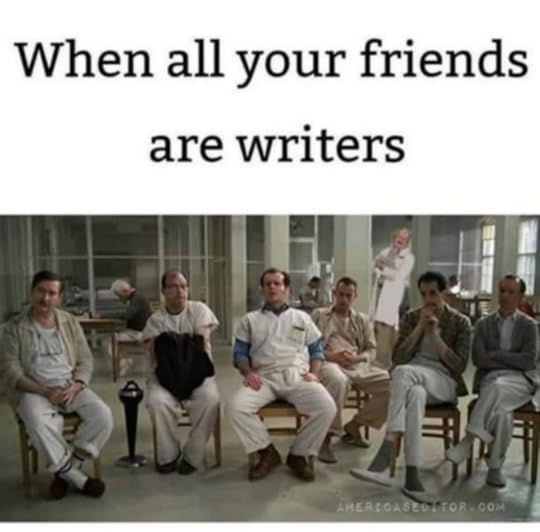
Can we just write a book? Sure. Do we have to write a series? Nope. Can we just write a book and hang out on Facebook? Of course. Do we have to have a blog? No. Do we HAVE to do a podcast? No.
But, unless our names rhyme with ‘Stephen King?’ we’re going to have to work super smart UNTIL such time we hit that critical mass of being a household name. My goal, as it has always been, is to give y’all ways to work smarter, not harder. And, now that self-publishing is mainstream? We’re pretty much back to that 93% failure rate, probably higher.
***Most self-published authors sell fewer than a 100 books…like ever.
Chris McMullen has a fabulous post on this. Granted, it is an older post from 2014, but he breaks the industry down really nicely, and I felt his blog gave a far more accurate perspective. For instance, unlike old school publishing, indie and self-publishing have a lot of categories that simply never would have existed before (I.e. poetry books, family genealogies, etc.) that will throw off the averages.
BUT, for the person who believes, ‘Write a Book and They Will Come?’ Those who write ONE book and market it to death, who refuse to do social media, blog, or create additional content via other mediums? Yeah, that max of a hundred books probably likely generous.
I GET that it is a tough time to be a writer, but it’s also a FANTASTIC time to be a writer. It’s just that writing goes beyond the books, and we should be happy about that. Yes, more work but we finally can have SOME amount of control over our success.
We can actually have a better business plan than ‘Blind Luck.’
What are your thoughts about Brave New Writing?Do you consume books in multiple ways? I listen to audio books, read on my phone, my Kindle and when the moon and stars align…paper. Seriously, writers make SO much money off me.
Are you excited or panicking about the podcasting thing?
***Don’t worry, I have an expert coming in to post and teach some classes so y’all can hit it with a stick and see if you might be game. Btw, I meant hitting the podcast idea, not the instructor.
I LOVE hearing from you!To prove it and show my love, for the month of SEPTEMBER, everyone who leaves a comment I will put your name in a hat. If you comment and link back to my blog on your blog, you get your name in the hat twice. What do you win? The unvarnished truth from yours truly. I will pick a winner once a month and it will be a critique of the first 20 pages of your novel, or your query letter, or your synopsis (5 pages or less).
AND REMEMBER to treat yourself to a class! I don’t reveal all my best intel on my blogs  .
.
Register HERE and use Pitch10 for $10 off if register by 10/1/21
Bring on the Binge: How to Plot & Write a Series 9/30/21Register HERE and use Binge 20 for $20 off until 9/21/21
The Edge: How to Write Mystery, Suspense & Thriller 10/21/21Register HERE and use Thrill10 for $10 off if you register by 10/14/21
The post Brave New Writing & Learning to Think Outside the Book appeared first on Kristen Lamb.
September 15, 2021
Plot Twists: Types of Twists & Why They’re AMAZING for Stories
 Image via movie ‘Black Swan’
Image via movie ‘Black Swan’Plot twists are very common in all forms of fiction from a short story (The Lottery) to novels (Gone Girl) to the screen (Vanilla Sky). Mysteries, by their very nature, demand the author understand plot twists and be able to use them well. The ‘kissing cousin’ genres—thriller, suspense, horror, and their many iterations—also rely heavily on the author’s ability to keep readers guessing.
Commercial fiction aside, most genres can benefit as well.
Plot twists are helpful for many reasons, though obviously we can’t cover them all today. We are a media-saturated world. As we talked about in my last post, we are a culture addicted to binging.
Humans have always had a propensity for gluttony. But, for the first time in our history, we finally have access to enough content to keep us mainlining story after story until we’re practically hungover.
This is great news, good news and bad news for storytellers. The great news is that storytellers are in high demand, and the higher one’s skill level, the better the payoff. Good news is people are consuming content in a wide variety of mediums from serial podcasts, to small screen series, to novels, to movies and on and on.
What’s the bad news, then? The bad news is that, because of this entertainment paradigm shift, audiences are far more discerning and savvy than ever. The ‘sacred knowledge’ only oracles (storytellers) once noticed and understood has flown the coop.
Audiences consume so many stories that they’re more attuned to any story that’s ‘formulaic’ to the point of predictability.
Plot Twists of Old ‘Strangers on a Train’ 1951 movie.
‘Strangers on a Train’ 1951 movie.In the pre-digital era of stories, audiences could only binge so much. I remember the 90s when my entire family was addicted to the Tony Hillerman mysteries. We’d pre-order the hard-back then fight over who got to read first, then heckle each other for taking too long.
But we could only get a Hillerman book about ONCE a YEAR. Sometimes longer.
Until about ten years ago, the small screen was mostly soap operas, daytime shows, network sit-coms and television dramas. Until Amazon Prime, Netflix, and the like, we had to wait a week between episodes. I once landed at DFW airport on time…only the plane had no gate open and we were forced to sit on the tarmac. We nearly had a riot on the plane because people didn’t want to miss the season finale of 24.
Seriously.
Suffice to say, with a week or more (or even months between new seasons) to cool off and forget details, audiences could only recognize/retain so much. Now that I’ve spent MONTHS binging NCIS, I see a WHOLE NEW show, simply because I now have the luxury of watching episodes back to back.
New-and-Improved Media
In the modern era, this ability to inhale content as fast as we want to has made audiences hungrier (YAY!). While this is great, the overwhelming exposure to story has also made it far tougher to keep audiences engaged. We have ‘new-and-improved’ writer problems. They are essentially the same problems, just taken up a few hundred-thousand notches.
It’s always been a challenge to hook an audience. But, these days, we have a far shorter amount of time. People have the attention span of a meth-addicted ferret with severe ADHD. They also have a gazillion other options if we fail to hook early and hook DEEP.
When we understand the fundamental changes in our audience, it then becomes clear why plot twists can offer major advantage.

For anyone who’s actually finished a novel or screenplay, you understand how the ‘sagging middle’ is an ever-present problem. When it comes to plot structure, most stories are three-act Aristotelian structure. The first act (beginning) and third act (resolution) are relatively short. The second act (all that connects in-between) is the longest act. Being the longest, it’s also the easiest place to bore and lose people.
Plot twists are a way of ‘shaking things up’ with the unexpected to keep the audience engaged. Also, since people have inhaled so much media (books, series, movies, serial podcasts, etc.) they’re much better at predicting the plot points and guessing the ending.
When we deploy savage plot twists, we keep audiences on their toes. We can also deliver an ending they never saw coming (but, in retrospect, should have). That is KEY, and we’ll talk more on that in a bit.
So what are common types of plot twists?
In the interest of time, today, we’ll discuss these four:
The Sleeper Agent
The Red Herring
The Sudden Detour
The Unreliable Narrator
As I mentioned earlier, some genres hinge on great plot twists (mystery). But even genres noted for being ‘formulaic’ can benefit as well. Romance is formulaic when it comes to structure.
Give me a minute before shouting me down.
If we watch/read a romance, we KNOW that two separate people initially at odds WILL EVENTUALLY come together and there will be an HEA (Happily Ever After) or the more modern HFN (Happily for Now) at the end.
If the couple does not end up together at the end, it is NOT a romance. It might be general fiction or women’s fiction but, by definition, it is NOT a romance. Just because our audience will KNOW the couple will end up together, however, doesn’t mean they should be able to predict precisely HOW.
Do romance authors need to use plot twists? Not to the same degree as other genres. But they are a great literary device to help your work stand apart.
Moving onto types of plot twists.
Sleeper Agent Plot Twists
This is our Judas Iscariot. An ally close to the protagonist turns out to either be working for the opposition or is, in truth, the ‘bad guy.’ The sleeper agent can be used to throw off the protagonist and ratchet the tension should it start to sag or lean toward becoming predictable in Act Two.
The protagonist is learning, growing, cooking and booking to solving the core story problem…then comes the sucker punch that sends him/her reeling. Not only can this character create havoc, but their betrayal will rattle the main character because they no longer know who they can trust.
In this case, the sleeper agent is there to shake up the second act, but they are merely an extension of the core antagonist (Big Boss Troublemaker). Their purpose is to add misdirection and make it harder for the protagonist to succeed.
The second way we can use the sleeper agent, as I mentioned above, is to activate them at the end. All along the protagonist relies on a certain character as an ally, only to realize they’ve been misled/used/betrayed. The movie Minority Report, is superlative example of this. The movie is loosely based off the 1956 novella by iconic sci-fi author Philip K. Dick.
Plot Twist EXAMPLE: Image via movie, ‘Minority Report’
Image via movie, ‘Minority Report’Chief John Anderton is head of a unique crime-fighting division known as pre-crime, where (presumably) murderers can be stopped and arrested before ever committing the actual crime.
John’s mentor and father figure, Lamar Burgess, wants to take pre-crime national and plays on John’s loyalty and emotions. When the Feds send in Danny Witwer to look for flaws, Burgess immediately pits John against the federal agent.
Thus, when John finds himself on the run, accused of murdering a man he’s never met, Burgess fuels John’s suspicion and paranoia that SURELY Danny Witwer is behind it. Witwer wants to take down pre-crime and what better way than ruining John’s name?
In the end, we realize Burgess has been using John all along. He doesn’t want to retire, especially now that pre-crime is going national. Additionally, he has to cover up crimes he committed in the early days and John is the perfect patsy. In Act Three, John has to take down the man he loved like a father who was happy to let him rot in prison.
Red Herring Plot Twists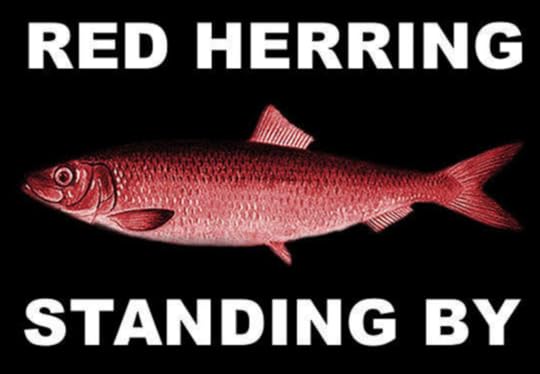
Y’all have all probably heard the term ‘red herring,’ but do you know where/how the term originated? The controversial journalist, pamphleteer, and politician, William Cobbett popularized the term when he relayed a story about how dog trainers would use a smoked strong-smelling fish to mislead hounds into following false trails. Over time, the hounds learned to better distinguish the false trails from the real deal.
If one writes mystery (or similar genres) red herrings should abound. Done well, the audience might believe EVERYONE ‘did it’ before the big reveal. False trails should be, first and foremost, believable. Red herrings can be tricky, though. First, use too few and readers will easily find their way back to the proper trail. Use too many? The audience becomes lost, confused or frustrated.
Red herrings must all be introduced as red herrings by around the 3/4 mark of Act Two. Since we’ve probably all read great books or seen great movies with red herrings done well, I’ll take a different tack. What happens when they’re done poorly?
Example of Botched Plot Twist: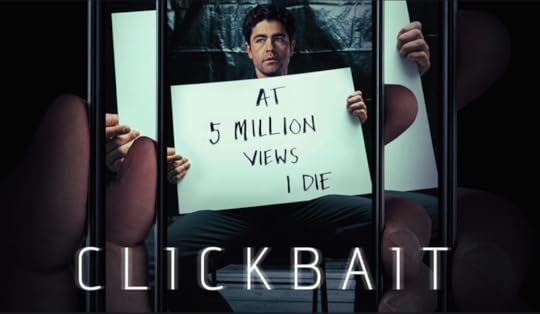 Image via Netflix’s ‘Clickbait’
Image via Netflix’s ‘Clickbait’Last night, we finished a new limited Netflix series called Clickbait. This series did SO many things brilliantly that I might post on it another time. The only criticism I have (and I won’t spoil it completely) is there was NO POSSIBLE WAY for the audience to figure out the ‘whodunnit?’
A crime takes place in the beginning (standard for mystery-suspense). Each episode follows a different character, many who either have a motive to commit the crime or they at least help solidify suspicion toward another character (red herrings),
I’ll tell you ahead of time that Clickbait seriously is worth watching for so many reasons. But…
Though the writers did a fabulous job with conflict, drama, character, and even red herrings, the ending smacked of an M. Night Shyamalan GOTCHA!
Granted, once the final episode reveals what actually happened and why, we see how it was a reasonable ending. It worked, but fizzled.
What irritated me was that, is even though the guilty party was introduced early on (a prerequisite), this character was presented as a mere fluff background character. In my POV, there was NO POSSIBLE WAY the audience could cull through the misinformation and figure out the WHO (the real culprit) or even the WHY (motivation).
On that? I call, “FOUL!”
The movie Horsemen pulled similar nonsense, only worse. I talk about it HERE. Again, Clickbait is TOTALLY worth watching, whereas Horsemen was two hours of my life I can never get back.
Sudden Detour Plot Twists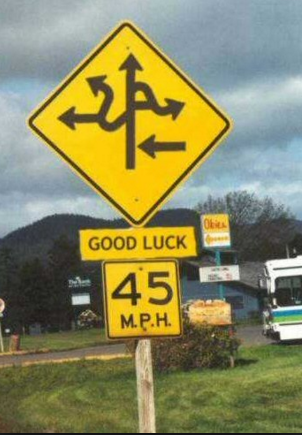
This is when we lead the audience to believe the protagonist has resolved the conflict, only to swerve hard left and reveal a totally new and unforeseen conflict in need of resolution.
We’ve all been there. The good guy seems to have won, but there’s still 20 minutes left in the movie or 30 pages left in the book. Often this plot twist works in tandem with the plot point we commonly refer to as ‘The False Victory.’ All stories should have this plot point because the next point ‘The Darkest Moment’ comes right as the protagonist morphs from main character to HERO.
This doesn’t imply that there is ALWAYS a plot twist, though. Often, the MC has a character flaw that has yet to be fully recognized and addressed. They’ve not grown enough to realize they need a team, they’re prideful, they have to forgive, whatever. If the MC fails to change, then they cannot ‘win.’
The sudden detour plot twist is different. The MC frequently HAS changed and DOES have a victory…only it is either incomplete or misguided.
Example of Plot Twist:
The iconic horror movie The Ring executed this sort of plot twist very well. When teenagers start dying mysteriously exactly seven days after watching a strange VHS tape, investigative journalist Rachel Keller is on the job. She has a personal reason to get involved. Her perfectly healthy niece was a victim.
She’s skeptical, but once she finds the tape, watches it and receives the same eerie death threat, “Seven daaaaays,” by phone, she has to figure out the mystery to save her own life. Instincts tell her there are clues in the video that are key to breaking the curse.
She’s partly correct.
Her sleuthing pays off. Rachel discovers one CAN break the curse if you convince another person to watch the tape, thus taking the curse onto themselves. But that’s more than a bit cold-hearted. She feels there HAS to be a better answer.
She also uncovers the identity of the girl from the video and what really happened…BUT she gets it wrong.
Despite warnings from those who knew the child (Samara) and claim the child was evil, kind-hearted Rachel refuses to believe it. She follows the clues, locates the well, and discovers Samara’s remains. She also finally understands the ‘seven days’ reference. It’s how long it took for Samara to drown after her adoptive mother pushed her into the well.
Rachel BELIEVES once she uncovers the truth and brings justice to the murdered Samara that the curse will end.
NOPE.
Samara is not the innocent victim Rachel believed her to be. Unless she figures out and complies with what the vengeful spirit wants (making more copies of the tape and spreading the curse), Rachel and her son are dead.
Unreliable Narrator Plot Twists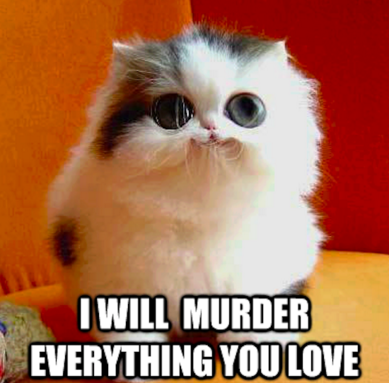 Betcha didn’t see THAT coming, LOL…
Betcha didn’t see THAT coming, LOL…Writers are devious, and excellent writers are borderline psychopaths. Don’t believe me? Check out my post, 13 Reasons Writers are Mistaken for Serial Killers.
Anyway…
The audience automatically trusts the main character/narrator of the book. It’s a lot like a baby duck imprinting upon the first animal/person it sees upon hatching. Once someone begins a story or starts watching a movie, they imprint on the MC and will, by default, assume the MC is ‘the good guy.’
We, writers, can use the audience’s blind trust to our advantage.
MUAH HA HA HA HA *coughs, sputters*
Moving on…
We weave a story with a perceived villain/threat that actually doesn’t exist, at least not in the way the audience believes. In Fight Club, we fully believe that the narrator’s frenemy, Tyler Durden, has betrayed the MC and gone completely psycho, dragging our beloved protagonist into his twisted plans.
This is all well and good except, we gloss over one tiny, but critical, detail.
In the book and the movie (both narrated in first-person), the narrator never TELLS US HIS NAME. By the end, we figure out the narrator and Tyler Durden are one-in-the-same.
The clues are there, though. This is what keeps us from screaming to the heavens at the end.
Early on, our protagonist seeks medical help for his crippling insomnia, but he’s brushed off. We notice his vision distorts, he’s losing gaps of time, and crazy girl Marla Singer keeps showing up dropping clue after clue that something is VERY wrong with our narrator friend.
What we come to realize is that the MC, at some point, suffered a psychotic break from lack of sleep, and his repressed alter ego (Id) manifested in real life. The MC very literally IS his own worst enemy,
Examples of Unreliable Narrator Plot Twists: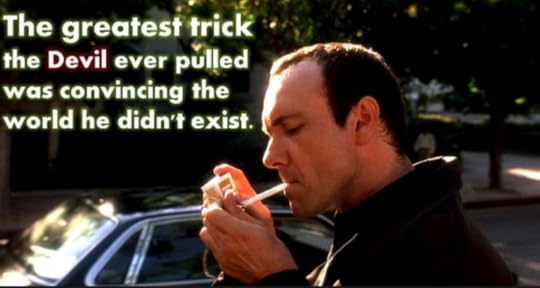
The unreliable narrator has many different forms. There is a person suffering from some form of a psychotic break, which I feel was done brilliantly in the movie Black Swan and Vanilla Sky.
Some might want to include The Sixth Sense as an excellent unreliable narrator, but I am hesitant there. It smacked too much of the newbie writer’s, “It was all a DREAM!” ending.
In my opinion, there weren’t strong enough clues for one to figure out we were possibly dealing with an unreliable narrator. We had NO way of knowing what the color red meant, only that it was odd. Granted, Shayamalan pulled this story off brilliantly, but he ultimately ended up a victim of his own success.
The misdirection he used in The Sixth Sense could only work well ONCE on a totally naive audience.
Also not that not all unreliable narrators are the same. Rachel Watson from The Girl on the Train is an alcoholic who drinks until she blacks out. She claims to be a key witness in a murder, but can she be trusted? Is she a witness, a victim or is she a delusional attention-seeker?
The movie, The Usual Suspects offers yet another flavor of unreliable narrator. The story takes advantage of inherent human biases. Who IS the infamous Keyser Söze? Well, just like the other examples I’ve given, there ARE strong clues. Those paying attention have the trail of breadcrumbs, but only if they stop to notice them.
In ConclusionPlot twists are a fantastic literary device that can help bring on the BINGE! Writers who use this device well can turn audiences into acolytes.
But BE WARNED! The plot twist is a double-edged sword. As authors, we MUST understand plot structure and character well enough to to properly set up and deploy these twists and do all this WELL. In the hands of an amateur, plot twists smack of ‘trying to be clever.’ This can be a death sentence for a story, and audiences aren’t as prone to forgive in a world offering a gazillion other options.
I simply don’t have the time to cover HOW to execute these plot twists well, so we’ll leave it for another day or y’all can take advantage of my upcoming classes.
Like other literary devices, I strongly recommend doing a TON of studying, reading, get training, and practice, practice, practice.
Classes!Sorry for the delay. Event Espresso took a couple days to get back to us and this was a known bug *great gnashing of teeth*. Apologies for any inconvenience, but I am offering an additional DISCOUNT for the log-lone classes, $10 off using Pitch10 and extending the deadline for the discount of Binge20, $20 off for the plotting class.
And, in the Bring on the Binge class, WE WILL DEFINITELY be discussing how to use misdirection and plot twists to keep your series fresh and make it highly addictive. I have ALSO added a new class The EDGE, another class where you can also learn more about plot twists.
Practice Your Pitch: Master the Log-Line 10/14/21Register HERE and use Pitch10 for $10 off if register by 10/1/21
Bring on the Binge: How to Plot & Write a Series 9/30/21Register HERE and use Binge 20 for $20 off until 9/21/21
The Edge: How to Write Mystery, Suspense & Thriller 10/21/21Register HERE and use Thrill10 for $10 off if you register by 10/14/21
What are your thoughts?Can you think of some great examples/types of plot twists I didn’t mention? What are some of your favorites? Are there any that fumbled so badly you would have tossed the story across the room but smart phones and flatscreen televisions are too expensive?
What made the plot twist sizzle or fizzle?
I LOVE hearing from you!To prove it and show my love, for the month of SEPTEMBER, everyone who leaves a comment I will put your name in a hat. If you comment and link back to my blog on your blog, you get your name in the hat twice. What do you win? The unvarnished truth from yours truly. I will pick a winner once a month and it will be a critique of the first 20 pages of your novel, or your query letter, or your synopsis (5 pages or less).
The post Plot Twists: Types of Twists & Why They’re AMAZING for Stories appeared first on Kristen Lamb.
September 10, 2021
Binging is BIG: 3 Simple Ways to Make Your Series HOOK Readers

Binging is big business. Series are HOT, HOT, HOT! As in hotter than ever in the history of fiction. Granted, humans have always had a proclivity for gluttony. It’s just that, until very recently, we were limited. We simply didn’t have so much content and instant availability.
This said, series have always been popular. When I was growing up (back in the B. Dalton days) I’d deliberately look for authors who’d published multiple books—series in particular—because if I liked the first book?
Let the BINGING commence!
My early teen years are a blur of Dragonlance, the Dragons of Pern, The Belgariad, Star Trek books, the world of Dune, and more.
Readers have gravitated heavily to series in all sorts of genres for decades. From Sue Grafton’s Alphabet Series, to Tony Hillerman’s Leaphorn & Chee series, to J.K. Rowling’s Harry Potter series and beyond, the trend is clear.
Humans LOVE stories that can go the distance. We can’t resist a good story, and once we’re transported into a world we LOVE? It’s next to impossible to kick us out.
This is true with books as well as film.
Filmmakers count on our propensity to gobble up all we can. This is why Netflix, HBO, Amazon and more have taken to translating popular novels (series in particular) from the page to the screen. Hallmark is actively looking for books to make into films.
Why?
Because they NEED CONTENT to keep an entire channel dedicated to love thriving. They need to feed viewers all the romance, HEAs (happily-ever-afters) and HFNs (happily-for-nows) their audience can stand.
Now, more than ever, series are HUGE. Why? We’re still dealing with COVID. People aren’t traveling, a lot of folks are staying home, and daily patterns have changed. We might be far more isolated and solitary, but that doesn’t stop us from craving emotional connection…even if that connection is to imaginary people.
Audiences that once spent the weekends at events or wandering malls are now binging podcasts, audio books, novels, Netflix and more.
Series are GOLD…or Crack
I know this blog mostly focuses on the publishing industry, but, as we’ve talked about before, Hollywood was one of the giants to collapse under the digital tsunami. Publishing wasn’t alone in getting a tail-kicking.
Hollywood lost its lock on the industry for a number of reasons, even before COVID-19 shut down sets.
First of all, location, special effects experts, and stunt people not as important when you have computers and software. Low-cost computers and software. Also, Hollywood (much like the Big Six Publishers) lost their virtual monopoly on distribution.
Then, add to this that audience preferences have been progressively changing, and BOOM.
*sounds of sinkhole appearing beneath Hollywood*
We’re less likely to go to a movie theater, and more likely to stay home. Again, COVID anyone? That, and since Hollywood seems to think we need Transformers 23 and Smurfs 17, and every movie REMADE over and over (unimaginatively), the big screen lost much of its appeal even before everyone walked around dressed as if they were about to perform emergency surgery.
I honestly wonder if Hollywood would even be around if Marvel didn’t exist to keep them on life support.
Binging as Business ModelAmazon was among the first to add film-making to their repertoire. Love them or hate them, they DO tend to work smarter not harder. Amazon was also among the first to aggressively solicit rights from authors who’d already penned successful series (e.g. Michael Connelly’s Harry Bosch series).
The networks, Amazon, Netflix, Hulu, Cinemax, Showtime, HBO, scads of micro-channels and YES even AT&T are ALL now in the film business. Unlike Hollywood, these folks aren’t looking for a ninety-minute blowout blockbuster cast with overpaid, prima donna megastars.
Nope.
They’re on the HUNT for print series that already have captured audience imaginations and come with a ready-made fanbase. Why? Because then they can turn these books into season after season of binging happy-watching joy. The small screen also makes room for filmmakers to cast unknown or lesser known actors, giving them a place to shine and win our hearts.
Unlike Hollywood, those vested in the small screen series aren’t in the business of serving up microwaved leftovers. They understand there are more stories out there that could be just as fabulous in a different medium.
With lower production costs, audiences who CRAVE series, and their own lock on distribution? Series are a solid bet almost every time.
The 21st Century Soap
Why are series SO popular, aside from the lower risk and higher odds of profit?
Audiences have changed. The 21st century is a very different world…especially after 2020.
*plays Twilight Zone theme song*
Many of us grew up with daytime television, where the major networks were king. Soap operas held strong appeal because many women still stayed home and college kids had time to kill between classes.
Cable was expensive and we had to pay actual money to rent movies or go to a theater.
These days? Pretty much everyone works and television has a TON of competition, from social media to video games. While soaps are still around, the viewing audience these days is looking for a way to unwind at the end of the day or on the weekends.
Series have proven to be one of the best ways to captivate a massive reading/viewing audience because they have a unique capacity to go viral, and in doing that, to become woven into the very fabric of popular culture (e.g. Game of Thrones ).As I write about in my branding book Rise of the Machines: Human Authors in a Digital World, stories are a different product. Lower prices and traditional advertising and marketing won’t sell books. Never have and never will. Why? Because a book is an emotion-driven purchase.
***NEWS FLASH! Most regular people don’t consider themselves readers. It is peer pressure that converts non-readers into evangelical fans (e.g. Twilight, Hunger Games, Harry Potter, 50 Shades of Grey, The Girl with the Dragon Tattoo, etc.).
Peer pressure is essential for any book (or series’) success. If a series can take hold and enough people read/watch? Others, who maybe normally would never have read/watched a ‘high fantasy’ series, join in because they feel ‘left out.’
They want to be IN on the jokes, the discussions, arguments, and memes.

Now that I’ve made my case in favor of series, what can we do if we want to write a series?
How can we make our series addictive? For the record, I will mention newer series, but I want to really focus on book series that have been remade into film, particularly series that have become pop culture phenomena.
Binging Series: Addicted to a Unique Character
This is where we need to dig deep and use our imagination. Whose story can we tell? What sort of ‘person’ would possess a story that’s wholly unique?
Can we create a character who is SO larger than life, that audiences can’t get enough?
Yup.
Jeff Lindsey’s Dexter series is a superlative example. Dexter Morgan is a serial killer…who only kills BAD people. Audiences get a front-row seat in the mind of a pure apex predator and a high-stakes ride-along with a sociopath who’s faking being fully ‘human.’
Robert Galbraith’s Cormoran Strike series is now on Cinemax as C.B. Strike. Cormoran Strike who is a) the illegitimate son of a rockstar father and super-groupie mom b) is former Royal Military Police c) a decorated war hero who lost his leg in an IED explosion d) who then turned private detective who e) has an unusual attraction to unstable and dangerous women.
I’ve read almost the entire series, and a main character THIS colorful was always begging to be put on the screen.
Series: Addicted to a WORLD
Regardless of the genre, there is always a degree of world-building even if it’s the world of being a P.I., a homicide detective, or an intelligence agent.
This said, obviously there are other genres that require a MUCH higher degree of world-building. Do this well and your series world becomes a holodeck audiences never want to leave… these days more than ever.
The challenge is to create a world where audiences connect via familiar turf presented in new and fresh ways.
Obviously, I already mentioned the runaway HBO hit Game of Thrones, based off George R.R. Martins’ series A Song of Ice and Fire. For all us nerds who grew up on D&D and binging fantasy fiction?
This series hit us in the feels of what we once knew…but in a far grittier and vastly more dangerous form.
Throw in The Shannara Chronicles which already has three seasons, Stranger Things the MEGA POPULAR show that finally has a season 4 update, and The Witcher (which has SECOND season coming soon) and fantasy is bigger than it’s been since the 70s. These are only a handful of shows and many of the popular shows, perfect for binging, originated as novels.
I believe this at least shows that talented storytellers are in high demand.
There’s also Diana Gabaldon’s romantic time-traveling saga, the Outlander series, which Starz adapted to screen in the series…Outlander. Why does this world resonate?
Because it is SO over the TOP. Great fiction is just that…GREAT (more on this in a bit).
Even HISTORY has become cool. Vikings had NINETY-THREE episodes. The Last Kingdom ran for FIVE years (starting in 2015) and boasts and impressive FORTY-SIX episodes.
Graphic Novel Gorging
Finally, I’ll mention an old favorite of mine…iZombie. Though our cultural obsession with zombies has tapered off a little, we still love the undead. But what can make audiences devour episodes faster than zombies binging on brains? Make them interesting.
Chris Roberson and Michael Allred reimagined what exactly a zombie WAS.
Instead of the mindless mob/pure monster, Liv Moore (who gets infected) realizes she’s technically dead, her appearance has changed (pale skin and hair) and she craves human brains. But, so long as she feeds she doesn’t go ‘full Romero’ (a.k.a. mindless monster). Which is WHY she gets a job in the morgue.
This way, she can feed in an ethical way…but there’s a catch.
Upon consuming a corpse’s brain, Liv can see glimpses of that person’s memories from when they were alive. She also picks up abilities from the brains she eats…which makes her ideal for solving murders.
Granted, Liv totally qualifies as a character addiction, but don’t be too surprised when the world around these zombies and the tough moral questions hook you and you can’t let go.
iZombie, which began as a graphic novel series and ended up with FIVE seasons produced by CW.
Series: Addicted to a CAST
HBO’s super successful True Blood also began as Charlaine Harris’s Sookie Stackhouse series. Harris, much like Roberson and Allred, reinvented the vampire for a modern generation. It was the perfect storm for book binging as well as series binging.
Back in the day when True Blood was at it’s height, I just wasn’t terribly interested. But, over time, I kept hearing about it and… *peer pressure steps in*
Yes, I was definitely late to the True Blood banquet, but after Hubby and I inhaled every season from HBO, I THEN read every Sookie Stackhouse book. Granted the books were different from the series, but that only made it better. I was enjoying something new and fresh that I already had enjoyed in another medium.
It was a fantastic concept with a ton of depth, dimensional characters, and a thematic layers and subtext for days...or rather years.With the invention of synthetic blood—True Blood-–vampires finally had an opportunity to ‘come out of the casket.’
This series posited a lot of intriguing and challenging questions. Can predator and prey ever truly coexist? What’s required of all parties involved? How do we (humans) overcome superstition, fear, intolerance, etc.? All these themes, btw, were also addressed in iZombie.
These series gave us complex questions with no simple answers and that, in large measure, is why we kept going back.
But not the ONLY reason. The Sookie Stackhouse series offered a wonderful, colorful cast. It was hard not to fall in love or in hate with one or more of the characters.
If we think about favorite series (in print or on screen) we can frequently see there’s a passionate devotion to more than the MC.
Whether this is Harry Potter, Buffy the Vampire Slayer, Star Trek, or Rizzoli and Isles, we frequently connect to the group as a whole…but we can also find those series where we passionately root for OUR team (e.g. Harry Potter and yes, I am a Griffendork).

I will say this about series, regardless of whether we’re talking about books or ‘film.’ Characters are critical for binging. The reason? Characters are the connection point that makes us care about any particular world.
This is especially important in those genres with more complex world-building like science fiction or fantasy. It is easy to let magic and gizmos and gadgets and portals eclipse the story.
Audiences cannot connect with a sonic screwdriver unless they connect FIRST with The Doctor. It is critical we create characters audiences love, hate, love to hate, root for, root against, characters the audience can identify with on some primal level.
Ultimately, series will hook audiences in any of these three ways I mentioned above (or all).
This said, character is critical to make them care.
Go BIG or GO HOME
Remember, everything in great fiction is…GREAT. It’s BIG! This is true in a variety of ways, depending on genre. With our science fiction, fantasy, thrillers and the like, we want expansive stories, MASSIVE problems and dimensional, complex villains and antagonists.
Yet, I understand not everyone writes in these genres. We (the audience) don’t want the mundane everyday life, because we already live the mundane everyday life. So even if one writes romance, sweet romance, general fiction (anything sans monsters, serial killers, magic, terrorists, etc.) these ‘small’ stories can still ROAR!
If one looks to iconic authors like Debbie Macomber, she doesn’t write about alien invasions or portals to other dimensions. In a sense, she does write about ‘everyday life’ but she condenses it to the knottiest problems where there are no easy answers.
She doesn’t pen ‘scene’ after ‘scene’ of baking, shopping, eating and talking. Instead, she has characters facing tough personal problems we can all relate to (taken to a far more intense level) and she weaves a series where everyone’s personal demons impact those around them. Her ‘worlds’ might be a small town, but the world is so visceral it becomes a character in and of itself.
During a time we are all psychically raw, stories are the balm to soothe the soul. Come on! Just laugh a little!
Come on! Just laugh a little!Between global problems, politics, on-line trolls, and all the general @$$hattery on social media (really, it IS possible to talk about more than politics), a lot of us are retreating into fiction. There is a place for every genre and every kind of story so long as it has the chops to hook. Give that story some teeth, and binging is almost a given.
Everything in a series is bigger. It is life…in distillate form.
One of the most common problems I see with new writers is they hold back. Their characters make good/sound/adult decisions. They’re too self-actualized. The problems are rarely enough to support a novel, so forget about a series.
Remember series—like skyscrapers—are massive structures that require massive foundations. This means the characters, the problems, the world all have to be larger than life…and these days? That is friggin’ HUGE.
In the new digital world we are surrounded by extremes—the most beautiful people, the richest, the most famous, the most talented as well as the most horrific of crimes, the most dire of problems, the most world-ending crises. Day after day after day.
This is NOT the 1950s so we have to UP OUR GAME. Bad decisions make for the best of stories.
With Binging, Even Everyday is LARGER than LARGE
When a depressed high school chemistry teacher (common person with a common job) gets a diagnosis of Stage 3 lung cancer (a common disease), he realizes his family is likely to end up financially destitute upon his death (a common problem).
That’s when this dying teacher decides to use his chemistry skills (NOT exactly a super power) to cook crystal meth for distribution and sale in the underground criminal world.
BACK THE TRAIN UP! WHAHHH???In story, especially series, even the everyday mundane must become MASSIVE. Otherwise? Who cares?
Everything about Breaking Bad is common as clay until Walter White turns that corner. It is Walter’s very unconventional decision about precisely how to solve a ridiculously common problem (no money) that changes what wouldn’t even be worth a short story into an absurdly successful television show.
Think about your favorite series—in print or on screen—and you’ll see what I am talking about. Whether it is a world so vast we’d need lifetimes to plumb its depths, characters we cannot bear to let go, mysteries unsolved, questions unanswered, or ends not neatly tied off…
All these comprise the very essence of why we (the audience) keep coming back and binging again and again. We don’t want to leave, and can’t bear to let go. It’s like that bad relationship you barely escaped—the highs and lows and thrills and chills only WAY BETTER…because your stuff doesn’t end up in your driveway on fire.
…usually.
This, my author friends, is how to hook an audience into your series and never, ever let go  .
.
Thank you, Anne for the suggestion. I have loaded a class to teach how to write/plot a series. For the record, all my classes are new, fresh with updated content (I’m just too lazy to redo graphics every time). I NEVER teach the exact same class twice. So, if you recognize a name of a class, I PROMISE it will be a totally different experience…and probably better because I am always learning and reading  .
.
Sign up HERE. This is a TWO and a HALF HOUR CLASS and use Binge20 for $20 off if you sign up before 9/17
Practice Your Pitch: Master the Log-Line September 16th, 2021Sign up HERE. This is a TWO-HOUR interactive workshop and a FREE recording is included.
Practice Your Pitch: Master the Log-Line October 14th, 2021Sign up HERE. This is also a TWO-HOUR interactive workshop and a FREE recording is included.
What are your thoughts?Does this get you a tiny bit excited about writing again? The pandemic has changed our world forever, whether we like it or not. But we can fixate on the problem or see the solution. Have you binged book series or television series more than ever since 2020? What are some of your favorites? Why?
I, personally, am SO happy I have Kindle Unlimited, which also allows me to binge on audio books and discover new authors/series. I have gorged on so many series I’ve lost count. I’ve read everything from classic books to modern series.
I read ALL of Sir Arthur Conan Doyle’s works, at least a a dozen mystery series, read all of the works of H.P. Lovecraft, every Robert Galbraith novel, virtually all of C.S. Lewis’s works, Ambrose Ibsen’s The Afterlife Investigations, most of Maria Grace’s Jane Austen’s Dragons (I let up on the throttle so she could publish more books), and I’m now eating my way through Daniel Arenson’s Earthrise series. And this is only a fraction of the books I’ve churned through.
***I listen to a ton of audio books while I cook, clean and do laundry, and I read a lot of genres to help me be the best instructor I can be.
I will be uploading classes, so, again, any suggestions for what classes you’d like me to offer?
I LOVE hearing from you!To prove it and show my love, for the month of SEPTEMBER, everyone who leaves a comment I will put your name in a hat. If you comment and link back to my blog on your blog, you get your name in the hat twice. What do you win? The unvarnished truth from yours truly. I will pick a winner once a month and it will be a critique of the first 20 pages of your novel, or your query letter, or your synopsis (5 pages or less).
The post Binging is BIG: 3 Simple Ways to Make Your Series HOOK Readers appeared first on Kristen Lamb.
September 2, 2021
The Log-Line: Can You Pitch Your ENTIRE Story in ONE Sentence?

Log-lines. Sigh. I introduced this concept in my last post , Writer’s Block: Is It Laziness or a Critical Part of Being a Longtime Author? Today we’re going to deep-dive exactly HOW to boil our novel down to a single sentence. Some of you might be wondering if I was trying to give you a heart attack with my title. Maybe you believe this feat is impossible. AN ENTIRE NOVEL IN ONLY ONE SENTENCE?
Maybe something simple, plebeian and commercially formulaic *flips hair* but ART cannot be forced into a box.
Yes. Yes it can.
I know, I know. Your novel is over four-hundred pages with made up technology and wizards and folding space using enchanted Thigh Masters….
I hear you. Calm down.
A log-line is a lifeline that will allow you to pitch a novel (or series) in ONE—YES ONE—sentence. The log-line is going to save you time, energy, and sanity (save the crazy for the fiction).
We’ll get to how a log-line is going to do ALL this AND give you six-pack abs in only five minutes a day in a moment…
***Legal Disclaimer: Consult your psychiatrist before believing any writing tool will give you six-pack abs. The giant pink bunny in the corner lies, too FYI.
Anyway…I used to try to teach story structure from the perspective of an editor, but I found that my approach was flawed. Why? Because editors are like building inspectors. We have skills best used on a finished product. We’re trained to look for structure problems.
Is that a good skill? Sure. But do building inspectors design buildings?
No.
Architects do. Architects employ creativity and vision to create a final structure. Hopefully, they will have the necessary skills to create and design a structure that will meet code standards.
Creativity and vision are not enough. Architects need to learn mathematics and physics. They need to understand that a picture window might be real pretty, but if they put that sucker in a load-bearing wall, they won’t pass inspection and that they even risk a fatal collapse.
Aestheticism must align with pragmatism.
This insight made me step back and learn to become an architect. When it comes to plotting, I hope to teach you guys how to have the creative vision of the designer, but with the practical understanding of an inspector.
We’ve discussed how plot works on a micro-scale (scene and sequel). After that, we panned back for an aerial shot, and discussed how great stories–like amazeballs rollercoasters—are addictive by design.
I’ve also covered how the single most important component to plot is the opposition, and l even have a tested method to make sure your core idea is actually solid enough to be the foundation for an entire novel.
So what’s this log-line thingy?Basically, we should be able to tell someone (an agent) what our story is about in one sentence. That is called the ‘log-line.’ Log-lines are used in Hollywood to pitch movies.
In this post we’ll cover two different ‘types’ of log-lines. One is the big picture of your story idea. We’ll cover that first.
But, if you read my previous post, I presented a formula for you to use before you even start writing your book. This is the more functional log-line. Think of this second ‘type’ of log-line as your story prototype. It is a scaled down version to make sure you have all the critical story pieces and YES, it will reveal the whole story.
More on that in a bit.
One resource that should be in every writer’s library is Save the Cat by Blake Snyder. It’s a book on screenwriting, but every writer can benefit enormously from Snyder’s teaching.
In the world of screenwriting there is a tenet, “Give me the same, but different.” This axiom still holds true when it comes to novels.
Our story cannot go so far off the deep end that readers cannot relate, yet our story needs to be different enough that people don’t just think it’s a retread.We as writers have to negotiate this fine balance of same but different, and that is no easy task.
So let’s look at components of a great log-line:
Great log-lines are short and clear.
I cannot tell you how many writers I ask, “So what’s your book about?” and they take off rambling for the next ten minutes. Often why writers are so terrified of the pitch session is that they cannot clearly state what their book is about in one to three sentences.
Here is a little insider information. When we cannot whittle our entire story into a minimum of three sentences, that is a clear sign to agents and editors that our story is structurally flawed. Not always, but more often than not. Your goal should be ONE sentence. What is your story about?
A good log-line is ironic.Irony gets attention and hooks interest. Here’s an example:
The Green Mile is about the lives of guards on death row leading up to the execution of a black man accused of rape and child murder who has the power of faith healing.
What can be more ironic than a murderer having the power of healing? Think of the complex emotions that one sentence evokes, the moral complications that we just know are going to blossom out of the ‘seed idea.’
A good log-line is emotionally intriguing.A good log-line tells the entire story. Like a movie, you can almost see the entire story play out in your head.
During a preview tour, a theme park suffers a major power breakdown that allows its cloned dinosaur exhibits to run amok.
Didn’t you just see the entire movie play out in your head with that ONE sentence? Apparently Steven Spielberg did, too and that’s why he took Michael Crichton’s novel Jurassic Park and made it into a blockbuster movie.
A good log-line will interest potential readers.Good log-lines exude inherent conflict. Conflict is interesting. In Save the Cat, Blake Snyder relays stories of how he would take his log-line to Starbucks and ask total strangers what they thought about his idea.
This is a great exercise for your novel.
Pitch to friends, family, and even total strangers and watch their reaction. Did their eyes glaze over? Did the smile seem polite or forced? If you can boil your book down into one sentence that generates excitement for the regular person, then you know you are on a solid path for your novel.
Yet, if your potential audience looks confused or bored or lost, then you know it is time to go back to the drawing board. But the good news is this; you just have to fix ONE sentence.
You don’t have to go rewrite, revise a novel that is confusing, convoluted, boring, arcane, ridiculous, etc.
Think of your one sentence as your scale-model or your prototype. If the prototype doesn’t generate excitement and interest, it is unlikely the real thing will succeed. So revise the prototype until you find something that gets the future audience genuinely excited.
You have your log-line. Now what?
Your log-line is the core idea of your story. This will be the beacon of light in the darkness so you always know where the shore is versus the open sea. This sentence will keep you grounded in the original story you wanted to tell and keep you from prancing down bunny trails.
The Fear FactorFear is probably the most common emotion shared by writers. The newer we are the more fear we will feel. A side-effect of fear is to emotionally distance from the source of our discomfort.
This is why so many first-time novels fall apart.I can tell everything that is wrong in a novel with a single glance at the log-line. Conversely, I can tell a writer what precisely needs to be fixed by looking at the log-line.
Does the story have a core problem? Is it a large enough/interesting enough problem to merit a whole novel? What are the stakes? Is there a ticking clock or have we given the MC forever to get around to accomplishing the goal?
If you’re like me and botched your first (hundred) attempts to write a novel, RELAX. It takes time to develop the level of sadism required to write spectacular stories. Not everyone is a born psychopath like George R.R. Martin.
New writers (in particular) tend to shy from any source of conflict, but conflict is the life blood of fiction. Log-lines can show us our story is flat-lining and WHY.
One of the best ways to learn how to write log-lines is to go peruse the IMDB (Internet Movie Database). Look up your favorite movies and see how they are described.
You can even look up movies that bombed and very often see the log-line was weak and the movie was doomed from the start. Look up movies similar to the story you are writing. Check out movies similar to the story you want to tell.
Your Log-Line As Prototype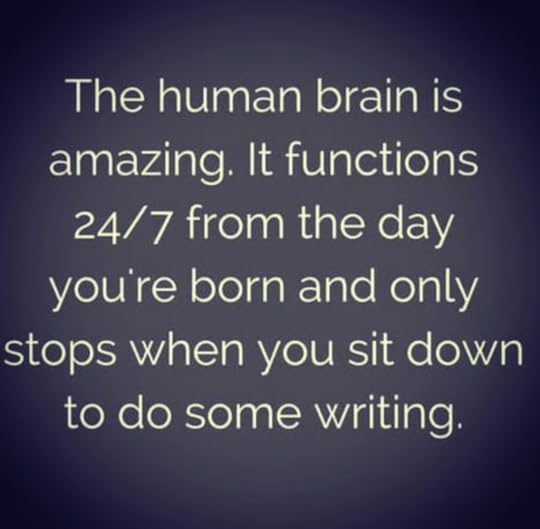
Some of the above examples are fantastic to pitch a book to, say, an agent. We still get an idea of the story. If cloned dinosaurs start running amok in a theme park, then one gets the idea that there are probably people stranded/in danger and that the point of the story is to a) escape and b) do something about the dinosaurs.
This is good enough but isn’t as specific as I would recommend if, say, you’re planning a new novel for NaNoWriMo, which is why I recommend using a certain formula.
Why is this so important?
Think about an architect responsible for a sky scraper. Such a large building will require a ton of money, materials, and time, so what does the architecture firm do first? They create a scaled down replica before ever breaking ground. This makes it far simpler to see critical flaws or areas that could be enhanced.
Same with a car manufacturer. Engineers have a fabulous idea for a new super car? They don’t simply start building a full-size, fully operational super car. They begin with the prototype. This saves time, effort, energy…and heavy drinking.
It’s the same for a novel. It is SO much easier to spot any problems with the log-line and tweak THAT, then it is to kill yourself writing 70,000-110,000 words only to THEN try and go BACK and try to figure out why the story isn’t working.
Here is the formula I use to create a solid log-line (story).Intriguing protagonist + active verb + core story problem (antagonist/Big Boss Troublemaker) + stakes + ticking clock.
Notice I Said ‘Intriguing Protagonist’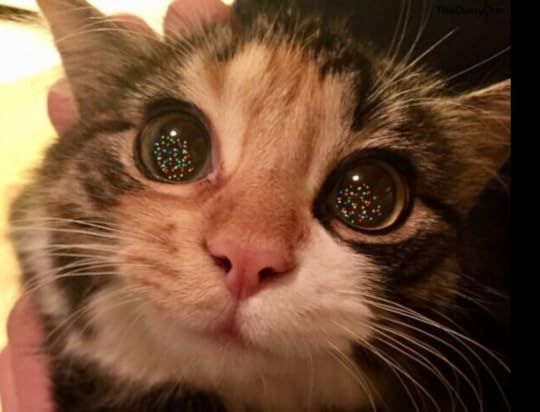
If I write a log-line that says:
Susan must locate her birth mother and convince her to donate a kidney before her daughter dies from an incredibly rare genetic disease.
At first glance it seems I have all the pieces, right? I have an active goal (locating birth mother for kidney). There are HIGH stakes (daughter could die and we are dealing with a rare genetic disease so unknown grandparent is likely only option) and a ticking clock (daughter will not last long without a kidney).
But who the heck is Susan? What did I say that gave y’all ANY idea about who she is? This is where that ‘ironic/intriguing’ will help you out. Ideally, we want to cast the protagonist who will have the toughest time talking someone out of a kidney (as if that isn’t already difficult).
Example A:
A recently divorced, overworked stay-at-home mom must locate her birth mother and convince her to donate a kidney before her daughter dies from a rare genetic disease.
Here we now have a clearer picture of our protagonist, and this is a perfectly great log-line depending on genre and how gritty you want to write. But a stay-at-home mom isn’t a super hard sell. She’s feasibly been abandoned (her husband left her for another woman). She’s rather sympathetic.
We get she was adopted and there are plenty of challenges ahead, but once she reunites with her birth mother, the tough part, by and large, is seeing if a stranger is willing to part with a kidney.
Example B:
After serving ten years of hard time for drug trafficking, an estranged mother recently reunited with her child must locate her own birth mother and convince her to donate a kidney before her daughter dies from a rare genetic disease.
See how this alteration changes the entire feel of the story as well as the stakes for all involved? Now we are dealing with a woman crushed by guilt, struggling to reenter society and remain clean.
The one dream that probably kept her sane in prison was that she would one day hold her daughter again. Though she IS reunited with her daughter, she regains custody from the courts just in time to watch her child die…unless she can perform this HERCULEAN feat.
We know from the log-line she will find the woman who put her up for adoption, but instead of Susan the sympathetic homemaker, she is Susan with the track marks, bad tattoos, and a history steeped in guilt and shame. Serious guilt/shame because, had she not done so many hard drugs, she would have been a perfect match for her daughter.
Both log-lines would make excellent stories, just one is far grittier from the get-go. See how, by simply changing blocks around, we can completely change the entire story? I hope this example helped clarify the whole ‘log-line’ concept.
So here is an exercise.See if you can state your novel in one sentence. It will not only help add clarity to your writing and keep you on track, but when it comes time to pitch an agent or hook readers to BUY, you will be well-prepared and ready to knock it out of the park.
Practice on your favorite movies and books. Work those log-line muscles!
If you want my help, I am back teaching/coaching! More classes to come. I have TWO upcoming log-line workshops. It’s the same workshop but y’all have two dates to choose from.
Practice Your Pitch: Master the Log-Line September 16th, 2021Sign up HERE. This is a TWO-HOUR interactive workshop and a FREE recording is included.
Practice Your Pitch: Master the Log-Line October 14th, 2021Sign up HERE. This is also a TWO-HOUR interactive workshop and a FREE recording is included.
***I will be adding more classes next week.
What are your thoughts?Does this make plotting seem more doable? Outlines make my left eye twitch, but I find this ‘trick’ very handy. Can you now see the component parts of a good story more clearly?
I will be uploading classes, so any suggestions for what classes you’d like me to offer?
I LOVE hearing from you!To prove it and show my love, for the month of SEPTEMBER, everyone who leaves a comment I will put your name in a hat. If you comment and link back to my blog on your blog, you get your name in the hat twice. What do you win? The unvarnished truth from yours truly. I will pick a winner once a month and it will be a critique of the first 20 pages of your novel, or your query letter, or your synopsis (5 pages or less).
August’s winner is Jan C. Johnson. Congratulations! Please email your pages (250 words is a page) in a Word doc, double-spaced 12 point Times New Roman font, with one-inch margins to kristen at wana intl dot com. Yes, I am being picky but it keeps me from going blind…-er. Also please put CONTEST WINNER in all caps so I see you in the sea of spam. Congratulations!
The post The Log-Line: Can You Pitch Your ENTIRE Story in ONE Sentence? appeared first on Kristen Lamb.
August 25, 2021
Writer’s Block: Is It Laziness or a Critical Part of Being a Longtime Author?

Writer’s block is a very controversial subject in the publishing world. Everyone has an opinion and everyone is right. Okay, maybe not everyone. I am right…and also NUMBER ONE AT HUMBLE!
*gets cramp patting self on back*
I believe that, when it comes to discussing writer’s block, there is a real danger of oversimplifying a truly complex phenomenon. Many claim there is no such thing as writer’s block. Just sit down and write and stop making excuses for being lazy. While laziness might be an answer (as we’ll explore) this One-Size-Fits-All solution is low-hanging fruit. Sort of like going to the doctor where the standard answer for everything is to “lose weight.”
Me: I’m tired all the time.
Doctor: Lose weight.
Me: My knee really hurts. I think I might have arthritis.
Doctor: Lose weight.
Me: *blood spurting from missing arm* I uh, think I need emergency surgery.
Doctor: Nah. Lose weight.
Now, is it true that many health issues could be remedied if we weren’t carrying around extra poundage? Sure. But, the human body is vastly complex, meaning it’s wise to ditch the myopia and take into consideration other factors.
Same with writer’s block.
Writer’s Block & Laziness
We’ll just deal with probably the most common explanation for writer’s block right now. Why? Because just like sometimes losing weight really IS the answer to a health issue, laziness could be at the root of our inability to put words on the page.
Why?
Because writing is hard work. Let me add a caveat, “Superlative writing is hard work.”
I know this because when I knew NOTHING about my craft, I never ran out of stuff to slap on the page. My first ‘novel’—the 187,000 word monstrosity I keep in the garage because it pees on the carpets—was a JOY to write. My book had IT ALL! There was romance, action, comedy! My novel had everything…except a plot.
Once I decided to be an author FOR REAL, everything changed.After a slew of rejections, I decided maybe I didn’t know as much as I thought I did. Once I joined a critique group, started attending conferences, began reading loads of craft books as well as fiction….
*weeps*
Suddenly this super fun activity transitioned into a serious brain-bender. I go into more detail on this in my post The Writer’s Journey: From Total Newbie to the Joy of Mastery.
Suffice to say that writing will always be tough work, and the challenges will never evaporate, only change. When we are new, pre-published authors, we are literally in the process of learning an incredibly difficult skill. While having talent is definitely an asset, it’s only one piece of a giant puzzle.
As we grow in our craft, the challenges shift. We might publish our first novel and it’s well-written. But then we have to write the next novel and the next. Then there is creating an author brand, sales, social media, formatting, covers, research, revisions, edits….AHHHHH.
Thus, writing can get really overwhelming and, if we fail to develop good habits, laziness definitely can be at the root of writer’s block. It’s just SO much easier to repaint the house than it is to knock out a thousand words, right?
Writer’s Block as a Safety Against Stupid
This opinion might be unique to me. I read a ton of blogs and books, but if someone else has shared this theory, I haven’t seen it yet.
My greatest weakness when I was an emerging author was I struggled with structure. Structure isn’t sexy, but it is essential. If you struggle, too, I recommend my post Fatal Flaws: Why Your Story is Falling Apart & How to Fix It.
If outlines make you break out in hives? No worries. This post even has tips that will work for pantsers (those who “write by the seat of their pants” for any n00bs).
I’ve been a writer and an editor for over twenty years, and the single biggest flaw I see in most new works is the writer does not have a clear central story problem in need of resolution. All stories are about problems. How do we know the story is over? The core problem is resolved—win, lose or draw.
*** Though admittedly endings where the hero ‘loses’ are most popular in foreign films and anything Sundance likes.
Maybe you’ve encountered this scenario.
You come up with a fabulous story idea and take off writing. The words flow out faster than you can put them down. You’re on a creative high…for about 10,000-12,000 words. Around 12,000-15,000 words, it gets a little harder, but you can still keep moving forward.
By around 25,000 to 30,000 words, it starts to feel as if it would be easier to perform brain surgery from space with an egg beater than to finish. So maybe you keep going back and perfecting the beginning, revising and editing what you already have…until you decide that the garage really needs to be organized.
I believe our subconscious mind is smarter than we could ever imagine. When we hit that wall, this could be a warning that something in our story blueprint needs to be repaired before proceeding.
Often, the core story problem is weak. But it might be a pacing issue, or we need to change a character, we have redundant characters that could be combined, we aren’t hitting plot arc and character arc at the right spot, etc.
Pay Attention to Warnings
Writer’s block can be a lot like those warning lights on our car’s dashboard. Sure, we could keep driving if there is a CHECK ENGINE light. We can keep going with a LOW FUEL light, or CHECK OIL light. It IS an option.
Temporarily.
But, eventually everything WILL grind to a halt. This is one of the reasons I’m not too keen on the pat answer that writer’s block is ONLY laziness. If we keep slogging through and turn out word count for the sake of word count because we don’t want to ‘be lazy,’ we can inadvertently make a mess that will take much more time to repair (if it can be repaired at all).
Our subconscious could be waving a red flag that there is a critical flaw in our story. If we’ll learn to pay attention, it can save us a TON of revisions and also help us become better at finishing what we start.
When I feel any major drag on a story, I recommend a quick check.
Want to unlock writer’s block? Write out your log-line for your story.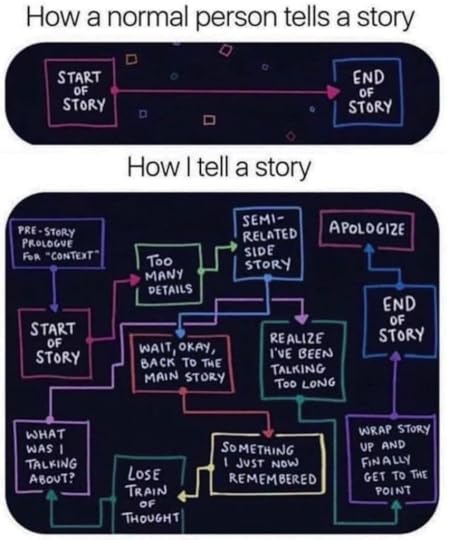 Funny in a meme, DEATH in life…
Funny in a meme, DEATH in life…You should be able to explain your entire plot (what your story is about) in ONE sentence. If you can’t? That is a HUGE problem. Maybe you believe your work is ‘too complex’ to whittle into ONE sentence.
Okay… *cracks knuckles*
A small band of friends from a naive and innocent race must traverse a land fraught with danger and war in order to destroy a magical ring in a specific volcano before a power-hungry necromancer destroys everything they love.
I just put the entire Lord of the Rings trilogy into a single sentence. Hey, I never said it couldn’t be a LONG sentence  .
.
Why do I LOVE the log-line? First, it is an incredible diagnostic. Here is my formula for the log-line:
Intriguing protagonist + ACTIVE goal (PLOT PROBLEM) + Stakes +Ticking Clock = AWESOME STORYLord of the Rings is so long and detailed it’s borderline insane. Tolkien even made up his own languages. But, at the end of the day? One goal. Drop a magic ring in ONE specific volcano before the world ends.
That’s it.
If you are struggling with your story, put it into this formula. You might see that you don’t have an ACTIVE goal. In Act One and partly into Act Two, YES, our protagonist will run. They will avoid, evade, hide and be reactive. Eventually, however, the protagonist must transition into a hero. To do this, they require an ACTIVE goal.
Figuring out your core antagonist—Big Boss Troublemaker— is essential for this. Without a core antagonist creating a singular problem in need of resolution, stories quickly devolve into ‘bad stuff happening.’
You might not have high enough stakes. What happens if your protagonist fails? If the protagonist doesn’t have skin in the game, neither will the reader. This is why Finding Nemo was awesome and Finding Dory was two hours of my life I can never get back.
You might not have a ticking clock. If a protagonist has forever to solve a problem, that’s going to be a hard sell to the audience. Give your protagonist a deadline…then roughly midway through Act Two, cut that in HALF. Then cut in half again.
Very often, when writer’s block slams into us, the key to moving forward can be easily located—then remedied—using a log-line.
Fallow Times or Writer’s Block?
What happens when a farmer keeps farming the same piece of land with the same crop year after year without rest? The harvest, over time, diminishes until nothing grows. This is why it’s vital to not only rotate crops, but to allow the land to rest.
Writing demands a ton of mental, physical, and creative energy. In the ‘olden days’ of publishing, the pace was far slower. If a writer scored a publishing deal, it generally took a year (minimum) to two or more years until the author would ever see that book in print.
While I’d love to discuss the positives and negatives of the sweeping changes in publishing, it’s a moot point. There is no putting the genie back in the bottle. Being a successful working writer simply requires a lot more than it used to. This means burnout is a much larger problem.
Many of y’all know I took on a ghostwriting project in early 2020. From outline to finished book IN HAND took thirteen months. After a 93,000 word manuscript, complete with a gazillion citations? I was put-a-fork-in-me DONE.
Often, we’re struggling because our creative reservoirs are depleted. When we’re writing, blogging, posting on social media, on and on and on? It’s a drain. We can only run on fumes so long before everything WILL come to an abrupt stop.
Active rest is essential. I recommend setting aside a block of time to do something else creative during the time you’d normally write. Whether that is painting, reading, or underwater demolitions is all up to you.
Remember Life Happens
Keep in mind, LIFE doesn’t suddenly pause because we want to write books. There was a time I would keep pushing and pushing no matter what (that whole ‘terrified of being lazy thing’) and all it did was give me shingles.
After finishing The Trap: Sex, Social Media and Surveillance Capitalism, to say I was fried is the understatement of the century. This book was one of the toughest projects I’ve ever tackled, an expose of epic proportions. Thank GOD I wasn’t doing it alone. But I saw things I can never UN-SEE. The research that went into that book boggles the mind since it covers everything from the adult industry as a whole to algorithmic data structures to surveillance capitalism to neuroscience and on and on.
***But OnlyFans is ditching their adult content, so WINNING!
I dedicated over a year of my life to a very worthy cause, but it took its toll. And, considering all the other stuff that happened in between? Pretty shocked I didn’t end up in a padded room.
Just this year, my mom has had two major surgeries, one for cancer. My husband had a surgery for melanoma (which was TERRIFYING). I still homeschool, run a business, and dream of one day having a clean kitchen. On top of this, my health, that hasn’t been great in a while, suddenly tanked.
I couldn’t even get out of bed.
I’ve been telling doctor after doctor for TWELVE YEARS my thyroid is messed up, only to be brushed off and told I’m a hysterical woman who spends too much time on the internet….and to lose weight.
*rails at heavens*
For TWO YEARS I’ve been saying I have Hashimoto’s Disease and that my hormones were whacked, only to be informed I was fine and needed an anti-depressant…and to lose weight.
A month ago, thanks to a dear friend, I was able to see one of the top endocrinologists in the country and GUESS WHAT? I have…Hashimotos’ Disease (which is an autoimmune disease that attacks the thyroid, among other things). Two weeks into the new meds and I am a brand new me.
The old Kristen would have kept pushing, kept blogging, editing and teaching, but I learned from the shingles nightmare. My body was demanding rest, so I rested until I could find a solution…a doctor who would listen and get me the treatment I needed.
Writer’s Block & Time Management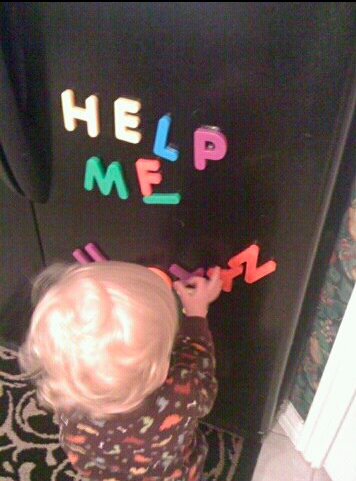
There are a couple of sayings I loathe with the power of a thousand suns. One is, “Everyone has the same 24 hours in a day.”
Patently…friggin’…FALSE.
Those rearing children, running a business, homeschooling, working a full-time job on top of writing, caring for elderly or infirm family, those suffering chronic illnesses might have precious little time to devote to writing. No, sorry, not everyone has the same 24 hours in a day.
DaVinci didn’t have to wash his own clothes, make his own meals, and take care of a young child and or an elderly parent prone to wander off to test-drive one of his flying machines while he was painting The Last Supper.
***Imagines Michelangelo checking a crockpot and calling out spelling words while painting Sistine Chapel.
This said, there is another quippy saying that bugs me equally—If I can find the time.
We cannot FIND time, only MAKE time. Can SO relate…
Can SO relate…I know from the comments that you guys wear a lot of hats, are caregivers, and many of you even struggle with a chronic illness. This is all a given. And YES, these constraints are real. At the same time? We are in charge of our priorities.
Writer’s block, in all its forms, is a call to action. It can be a sign we are lazy. We’re unwilling to do what needs to be done. If that’s the case? Then writing simply for FUN actually IS an option. Not every hobby needs to be monetized.
It could be signaling us to go back and look at the core components of our story before we get too bogged down in a mess.
Writer’s block might be the warning siren telling us to take a break before we break. It can also force us to examine our priorities.
“No” is actually a full sentence.If, after reading ALL of this, you still want to be a working author? Understand that writing time is sacrosanct.
***During a resting season, then active rest will go into this slot and has a time limit/deadline as well.
Writers WRITE. This is the priority ahead of laundry, dusting, PTA, and (insert activity HERE).
For more on this, check out my post Good Girls Don’t Become Best-Sellers—Channeling Your Inner “Bad Girl” to Reach Your Dreams.
Busting Writer’s Block
Now that I’ve given several different underlying causes for writer’s block, it’s up to you (and me) to see what fits. But keep in mind, our answers can and will change. What is true today, might not be true tomorrow, so it’s good to know these principles so we can do better regular ‘health checks.’
Some changes are easier than others. Is it time for a kick in the pants or to ease off the gas pedal?
If we’re truly being lazy, this behavior is frequently rooted in fear and perfectionism. Just remember, no one ever sold millions of copies of half of a ‘perfect’ book.
Though plenty of completed ‘crappy’ books have set sales records.
Some of us might be dealing with life circumstances or health issues that limit what we can do. Okay, set and maintain priorities then adjust accordingly.
Aside from the log-line, I have two more tips before we go.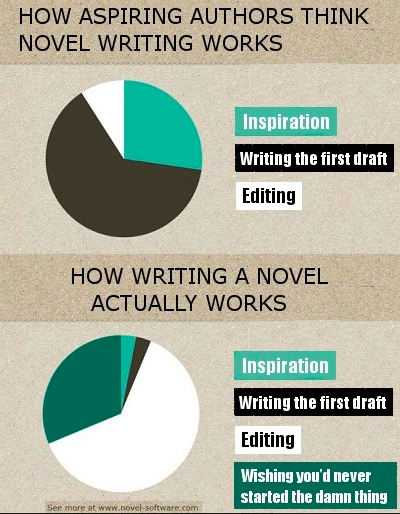
Sometimes we simply need to write crap. We cannot edit what isn’t on the page. Creative flow can be like water and we might need to ‘prime the pump’. Get out the junk to get to the good stuff. If we set a time and make writing a habit, then it’s easier to slip back into our stride if we have to take a break.
My second tip? When I hit a roadblock in any book, I first check against the log-line (or thesis statement for non-fiction). If that’s all strong, then I literally write AND SOMETHING AWESOME HAPPENS HERE, then pick up the story/book at the next logical point. I let my subconscious chew on how to bridge that gap while I keep moving forward.
In all the years I’ve been doing this, I have yet for ‘the boys in the basement’ to fail me. Often, my subconscious comes up with a solution far more inventive than I could have staring at a screen trying to force my writing into submission.
I hope this post has given you real solutions to a real problem because, YES…writer’s block is a real thing.
What are your thoughts?Have you struggled with writer’s block and felt lazy or ashamed because you aren’t ‘trying hard enough?’ Do you need to kick it into gear or maybe take some dedicated time off? Are some of you dealing with being a caretaker or trying to manage a chronic illness and write? Do you struggle with telling people “No” while making you and your writing last on the list?
Do y’all have any tips or thoughts you’d like to add?
I LOVE hearing from you!To prove it and show my love, for the month of AUGUST, everyone who leaves a comment I will put your name in a hat. If you comment and link back to my blog on your blog, you get your name in the hat twice. What do you win? The unvarnished truth from yours truly. I will pick a winner once a month and it will be a critique of the first 20 pages of your novel, or your query letter, or your synopsis (5 pages or less).
July’s winner is Charlotte O’Shay. Please email your pages (250 words is a page) in a Word doc, double-spaced 12 point Times New Roman font, with one-inch margins to kristen at wana intl dot com. Yes, I am being picky but it keeps me from going blind…-er. Also please put CONTEST WINNER in all caps so I see you in the sea of spam. Congratulations!
I will announce August’s winner next post.
The post Writer’s Block: Is It Laziness or a Critical Part of Being a Longtime Author? appeared first on Kristen Lamb.
August 4, 2021
Description: The Good the Bad and the Just Please STOP

Ah description. Few things can make a writer’s skin tingle like glorious prose, right? A couple posts ago, I gave y’all some editing tips. In the meantime, I also mistakenly stumbled across an audio book that should be charged with assault, ergo why we are talking about description today.
Can we be really honest about our description? Is it truly remarkable or just filling space? Are we weaving a spell that captures readers or are we boring them into a coma? Are we holding the reader’s brains, afraid if we don’t clarify everything, they might not ‘get’ what we mean?
For those who never use description or very sparse description? Don’t fret. Description (or lack thereof) is a component of an author’s voice and it goes to style.
But obviously all writers will use some kind of description. We have to in order to draw readers into the world we are creating. If we don’t give them anything to sink their teeth into, most will wander off in search of something else.
So whether you are heavy or light on the description, here are some tips on how to do it well…
Description forI will never talk badly about a book. Consider it a professional courtesy. This is why I only mention or review books I love. In my POV, writers catch enough crap without me ragging on them, too. I like to take into account that I am not a traditional reader, and I am far more picky because I’ve spent the better part of 20 years as an editor.
This, however, does not mean I won’t obliquely mention some real blunders when I see them. Kudos and all my love and best wishes for any author who finishes and publishes a book…period (whether I like it or not). You can’t please everyone.
Ah, but I can use what I stumble across as teaching moments.In that post about editing I mentioned adverbs and modifiers. What irritated the socks off me with this book is it had a compelling story, but the author treated me like I didn’t have a brain. There were so many redundant adverbs and unnecessary modifiers I quickly stopped paying attention to the story and started counting modifiers.
“He shoved her violently down the stairs.” Um, what other way does one shove another person down stairs?
“She stared at the sparkling, glittering scenery.” Oh, sparkling AND glittering. Good to know.
“She didn’t want to enter the huge, massive building.”
“The fire blazed hotly.” Whoa, really happy to know it was hot. I might not have caught that had the author simply used blazed and hadn’t been kind enough to tack on the hotly.
It actually saddened me that I couldn’t GET to the story. The core story was covered in so many verbal packing peanuts, I finally just got irritated and moved on. The story, so far as I could tell, was probably pretty good but I got sick and tired of the author treating me like someone too stupid to know fire is hot.
Avoid ‘Police Sketch’ Description
I assume most of you have watched TV. A witness is asked to give a description of the mugger, murderer, whatever. Well, he was tall, with dark hair and dark eyes. Very muscular.
She was short, blonde and fit. She had on lime green leggings and a pink top.
The reason I (as an editor) don’t care for this kind of description is a good writer is a wordsmith and we should be able to describe characters better than someone who’s been at the wrong end of a purse-snatching. Is there anything wrong with this description? Nah. Just it’s something anyone can do. It isn’t anything unique.

I have a handful of descriptions I’ve used over the years in various works to show how to use description without it sounding like we’re filling out a police report.
“He was the kind of man you forgot even while you were talking to him.”
“He had the face of a man who loved to fight, just wasn’t any good at it.”
In both these cases the reader’s imagination will fill in all the details.
Do we ALWAYS need to be ‘clever?’ No. But going down a list of height, hair color, eye color, and physical build is low-hanging fruit, and I am here to help y’all hone your skills to another (and hopefully higher) level.
Avoid the ‘Google Maps’ or ‘Weather Report’ Description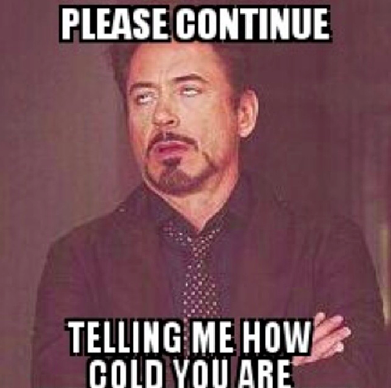
Weather can be vital and even its own character (which we will get to). But putting in weather just to tell us it’s snowing? Again, surface. Same with describing a location. Cities, streets, stores can come alive with the right description.
For some help with finding just the right words? Angela Ackerman and Becca Puglisi have put together two setting thesauri, the Urban Setting Thesaurus and the Rural Setting Thesaurus.
Avoid ‘Info-Dump’ DescriptionI was really bad about this when I was new. I described everything in a room. I believed the reader needed to know all the positions of the furniture, what was on the bookshelves and end tables, the colors of the walls, just to ‘get’ what I was talking about. They didn’t need all that and likely lost interest in the point I was trying to make anyway.
I didn’t give my readers enough credit and most of that information was for me anyway. Novels are for the reader not for us, which is important to remember and easy to forget.
Good description doesn’t automatically mean MORE description .What Makes GOOD Description?
.What Makes GOOD Description?
Again, this is subjective, but I read…a LOT. I need a 12 Step Program for the sheer number of books I buy. Since I dig description, I often highlight it when it’s done WELL (which is why I cannot check out books from the library).
The common denominator I see in great description is it delves beyond the surface and evokes some kind of feeling.In this post, I’m merely giving some of MY favorite examples (from many different genres). I recommend that, if you want to use description, go to those stories that spoke to YOU. Those highlighted spots can be telling about your voice, preference and style.
You don’t need to copy, but you can deconstruct how the author did something WELL. And likely, if you are a fan of that kind of writing, others are too and you might share the same kind of readers.
CharactersFor the Literary Folks I will use Cormac McCarthy’s No Country for Old Men:
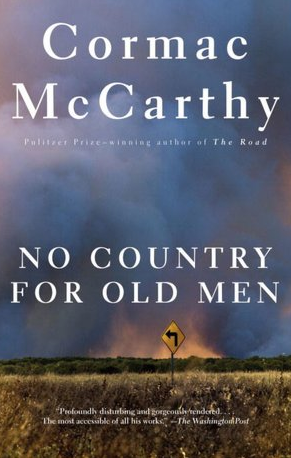
(Sheriff Bell) came across a hawk dead in the road. He saw the feathers move in the wind. He pulled over and got out and walked back and squatted on his boot heels and looked at it. He raised one dead wing and let it fall again. Cold yellow eye dead to the blue vault above them.
It was a big red tail. He picked it up by one wing and carried it to the bar ditch and laid it in the grass. They would hunt the blacktop, sitting on the high power poles and watching the highway in both direction for miles. Any small thing that might venture to cross. Closing in on their prey against the sun. Shadowless. Lost in the concentration of the hunter. He wouldn’t have the trucks running over it (Page 44-45).
In this story, a good lawman is after a soulless criminal who is nothing short of pure evil. This above description is important. The red tail hawk is a parallel of Bell. Bell is also a hunter who’s in danger of being so caught in the pursuit, it could get him killed.
Even though the lawman is tracking a criminal, he takes time to honor a fallen hunter even though it’s ‘only’ a bird, something the psychopathic antagonist, who has NO VALUE for any life, would ever do.
Part of that “Show, don’t tell” thing  . We don’t get a description of what Bell looks like, but through action, we know who he IS.
. We don’t get a description of what Bell looks like, but through action, we know who he IS.
For the sake of brevity, we’ll bundle three into one. Depp does a fabulous job of weaving weather, setting, and information in a tight cord of emotion. This selection is from Daniel Depp’s Loser’s Town.
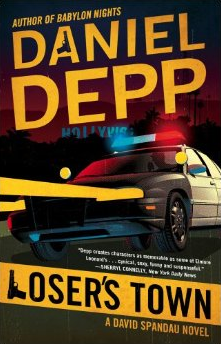
The protagonist, Spandau, is a P.I. is following a Hollywood agent to a movie set to meet a client who’s being blackmailed:
Spandau smoked, and thought the city gliding past was much like an overexposed film, too much light, all depth burned away and sacrificed. All concrete and asphalt, a thousand square miles of man-made griddle on which to fry for our sins. Then, you turn a corner and there’s a burst of crimson bougainvillea redeeming an otherwise ugly chunk of concrete building. Or a line of tall palm trees, still majestic and still stubbornly refusing to die, stubbornly sprouting green at the tops of thick dying stalks, guarding a side street of bungalows constructed at a time when L.A. was still the Land of Milk and Honey….There was a beauty still there, sometimes, beneath all the corruption, like the face of an actress long past her prime, when the outline of an old loveliness can still be glimpsed through the desperate layers of pancake and eyeliner. (page 23)
In this description, we get more than a play-by-play of the L.A. streets he passes. Additionally, I feel the description is very telling about the character. Note the contrasting biblical references or even the tension inside the character. He hates this place, but can still see the loveliness that tears at him and keeps him there, keeps him coming back.
The description is an extension of the feel of the city—no depth, manmade, hardened, lost (but still something beautiful worth staying for).
Note the description is processed through the feelings and backstory of the character.Instead of sounding like a travel brochure, there is emotional flavor adding depth. We pretty much know the weather—bright and hot. We experience the place rather than just ‘seeing’ it in a boring, “and then he turned on this street and then that street” fashion.
The description also shows us Spandau is likely an excellent detective—he sees more than the surface and instinctively searches deeper.
Again, description—how to do it, how much, how little—is subjective.But, I believe that good description can make the difference in a caricature verses a ‘person’ or ‘place’ so real we’re sad to say good-bye when the book ends. Also, I hope I’ve given examples of how we can describe a character or a place without ‘describing’ it.
Are we describing with the same depth as any semi-literate person with a laptop could do? Or are we digging below skin and into marrow?What are your thoughts? Do you find yourself skimming description and didn’t know why? Do you highlight great description, too? Or are you a minimalist? There aren’t any wrong answers, btw. Who are some of your favorite authors who ROCKS description? What are maybe some tips/thoughts you have that takes description from blasé to beautiful?
I LOVE hearing from you!To prove it and show my love, for the month of AUGUST, everyone who leaves a comment I will put your name in a hat. If you comment and link back to my blog on your blog, you get your name in the hat twice. What do you win? The unvarnished truth from yours truly. I will pick a winner once a month and it will be a critique of the first 20 pages of your novel, or your query letter, or your synopsis (5 pages or less).
I will announce July’s winner next post. I have been a bit under the weather and have had to do a lot of medical tests. Nothing terrible (I hope) just weirdly fatigued. And Katherine, I DID get your pages, though nearly lost your message in all the spam. Will have your pages to you this week  .
.
The post Description: The Good the Bad and the Just Please STOP appeared first on Kristen Lamb.
July 16, 2021
What’s a REAL Writer? Spotting Terminological Inexactitude Syndrome

Being a writer is the best job in the world, aside from those fortunate enough to be paid to pet kittens or sample new ice cream flavors. But is writing a REAL job? This question has set fire to the entire psychiatric community. Okay, most of them…the ones in my head *turns off fire alarms*.
Many in our modern culture don’t believe writing qualifies as a legitimate occupation. An unusual percentage of ‘average’ citizens firmly maintain that being a writer is NOT a real job. These same individuals, however, collectively spend billions of dollars and most of their free time enjoying entertainment (created by writers).
Cleaning Teeth= ‘Real’ Job
Writing= Goofing Off
Thus far, those interviewed have yet to note the irony of their assertions (or looked up definition of irony). Since being a writer is not a ‘real job,’ then this leads us to the next most reasonable conclusion. Writing, in truth, may be a mental condition. I have written about the 13 Ways Writers Are Mistaken for Serial Killers.
So there IS that…
Today is Friday, and since we all debated Sean Penn’s book in the comments section on my last post (Was he serious or poking fun at the establishment?), I figured this oldie but goodie was the perfect dash of humor to lead y’all into the weekend…
What IS Terminological Inexactitude Syndrome (T.I.S.)?
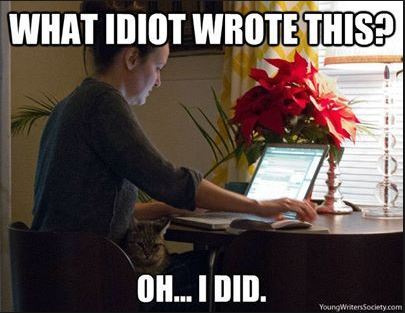
Tis’ a hard diagnosis for certain. Alas, Terminological Inexactitude Syndrome is a compulsive need to tell stories. We call those afflicted a ‘writer’ namely because ‘writer’ is shorter than ‘Terminological Inexactitude Syndrome.’ Also, those who used T.I.S. found others believed they were about to quote something from Shakespeare.
This only created even more confusion.
Writers (those afflicted with T.I.S.) frequently report ‘being born’ to tell tales. There is no clear indication if T.I.S. is congenital. Is it nature or nurture or both?
Is it contagious? If so, then will wearing a mask stop it?
No matter one’s preconceived notions, facts are facts. Background information reveals a symptomatology too eerily similar to be discounted.
Children/Young Adults exhibiting T.I.S.:
Preferred reading books, writing stories or drawing dragons 74% more than sports;Were 89.3% more inclined to request ‘extra credit’ assignments;Had a 300% greater likelihood of being found in school library when compared to non T.I.S. peers;Displayed a 92.4% chance of ‘royally sucking’ at Dodgeball (data is inconclusive about skill level or simple desire to be ‘OUT’ so as to return to reading Goosebumps);Demonstrated early addictive behaviors with office supplies. Parents who suspect their child might have T.I.S. should look for noticeable pupil dilation when shopping for school supplies;Have 5000% greater chance of making up utter BS statistics that appear highly convincing.Diagnosing if One is a Writer
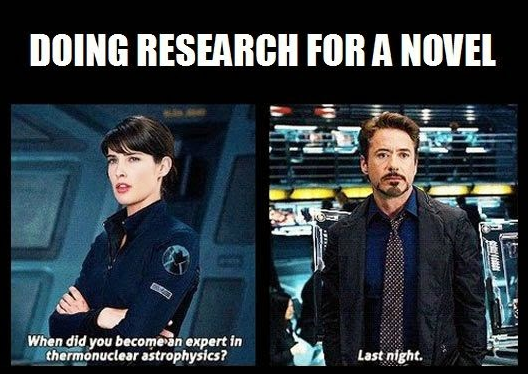
I won’t mince words here. Writer diagnosis is particularly challenging. Those who might actually BE writers can become rather tetchy at mere mention of the subject. A primary symptom of T.I.S. is that writers angst over what makes them ‘real.’ Few occupations struggle with such existential questions to this large a degree.
Am I a real cashier? I have a smock, a name badge and access to the registers, but am I merely a poseur?
Sure I graduated medical school, but does that make me a real doctor?
Everyone believes I fix cars, but I know I’m a fraud…even though I really do fix cars. Lots of them, actually.
Once the subject is at least willing to entertain the notion he or she may have T.I.S. then further diagnostic questions can assist in a proper assessment and more accurate diagnosis.
Sample Diagnostic Checklist—A Writer Frequently:Experiences wild mood swings (A.K.A. ‘Revision Syndrome’);Displays visible signs of distress, pain, and at times, explosive violence when shown sentences such as, ‘Your an amazing person,’ ‘Their are no more donuts in the brake room,’ and ‘There here to orientate the new hires, or so he lead us to believe’;Exhibits significant cognitive-tactile impairment when texting (refusal to employ ‘ur’, ‘IDK, ‘BRB’ or even the seemingly innocuous ‘lol’);Insists on using full sentences and proper punctuation, which leads to withdrawal from interacting with text messages and eventual social isolation;Can become agitated with certain trigger words such as bae, turnt or fleek;Sees nothing wrong with discussing rates of body decomposition, history of guillotines, The Black Death, or bot flies at social functions involving food;Is known to select mates based off vocabulary, intellect, appreciation for Monty Python, and ability to operate, repair, and set up laser printers (leading to an abnormally high ratio of writers choosing engineer ‘types’ as partners).The final test is only to be used by a trained imaginary diagnostician. Read excerpts from actor Sean Penn’s ‘novel’ Bob Honey Who Just Do Stuff aloud, then time how long subject lasts until he or she a) begins weeping b) curls into fetal position or c) begins bleeding from ears.Word of Caution

This last diagnostic should be used with extreme care and with a ‘trained’ medical staff on hand to ensure subject’s safety. A medical team can also ensure the person reading the excerpt’s safety. All medical personnel are strongly advised to wear ear plugs and be cautious of potential projectile vomiting…so keep 6 feet of distance or wear a rain poncho.
Alas this ONE sentence (seriously it IS only ONE sentence) can be remarkably helpful with diagnosis:
Whenever he felt these collisions of incubus and succubus, he punched his way out of the proletariat with the purposeful inputting of covert codes, thereby drawing distraction through Scottsdale deployments, dodging the ambush of innocents astray, avoiding the viscount vogue of Viagratic assaults on virtual vaginas, or worse, falling passively into prosaic pastimes. ~ Bob Honey Who Just Do Stuff Page 36If the subject understands this ‘sentence’ and doesn’t immediately exhibit signs of physical pain, the subject is probably not a writer. Rather the subject is most likely an actor who mistakenly believes he/she can write. Best recommendation is to gently guide subject back to the teenagers working at the movie theater who can properly care for the patient from there.
The Impact of T.I.S. (Being a ‘Writer’)

Those afflicted with T.I.S. cannot help but make up stories and believe they have no choice but to write. The DSM-V is due for updating. T.I.S. might qualify as a dysmorphia, since those with T.I.S. require a keyboard, pen, Crayon or some writing implement to ‘feel’ whole.
All evidence indicates writers must write to maintain reasonable emotional and psychological stability.
***Note: Parameters for ‘reasonable’ WAY broader for actual writers.
Writing, thus far, is one of the best ways to ameliorate the negative symptoms of T.I.S. Regular interaction with the ‘voices in their heads’ has a calming effect similar to the smell of pencil shavings and new paper.
For those afflicted with ‘Terminological Inexactitude Syndrome’ (storytelling) the condition can be challenging not only for those born with T.I.S., but for those who ‘associate’ with the writer. Obviously when a person is diagnosed as a ‘writer’ others, including family, cannot help but be impacted as well.
Parents might blame themselves for encouraging their children to read, being too permissive with time at the bookstores or library. Why didn’t they encourage accounting games instead?
Writer spouses/partners might find sometimes (usually during edits) they’ll have to…cook for themselves. I know! It’s harsh, but to be expected. Also, children might have to make their own cereal and find matching socks while unsupervised.
I’ll stop there.
Writers & Impact of T.I.S. on FriendsThe study of T.I.S. on friends has been uniquely challenging. Writer ‘friends’ usually are ‘people’ writers make up in their heads, because, and I quote: ‘Normal people are boring.’
Additionally, (since on the topic of writer ‘friends’) after repeated unsuccessful attempts, we’ve concluded houseplants and pets are almost impossible to effectively interview.
Houseplants scored slightly higher than cats.
Embrace Being a WriterFor those of you out there who know you are a writer, that you do have Terminological Inexactitude Syndrome, it’s okay. You are not alone and there is nothing to be ashamed of.
***Unless you’re a pretentious actor who believes he/she is a writer. Then? Be very ashamed and go back to acting.
We need to celebrate T.I.S. despite criticism. The world NEEDS writers. Without writers, we would have no books, movies, articles, research papers, or television shows. It takes a WRITER to succinctly craft warning labels spelling out of the dangers of EATING TIDE PODS.

It took a WRITER to warn the public that the electric meat thermometer was not intended for rectal use on humans. For those still alive who do NOT have a turkey thermometer lodged in their bum? Go bless a writer.
*moment of silence*
Only a writer can lie well enough to claim cheap deodorant has the power to make anyone sexy.
Seriously, just go Axe them  .
.
Do you suffer from T.I.S.? You are not alone. Do you find it impossible to text message because it takes so long? Do you experience anger when auto-correct tells your friend you ‘don’t have any ducks’ left to give? It’s okay. We get you.
What are some symptoms you experience that might be added to this ‘totes legit’ diagnostic test?
I think Sean Penn is an incredibly talented actor. He’s also remarkably brave for calling himself a writer. Don’t know about you, but I’ll never see alliteration in quite the same way.
Cheers! *raises glass*
For more inappropriate laughs—fine, a totally gallows humor but fast-paced mystery suspense—I hope you’ll pick up a copy of my mystery-thriller, The Devil’s Dance.
I love hearing from you!And am not above bribery!
What do you WIN? For the month of JULY, for everyone who leaves a comment, I will put your name in a hat. If you comment and link back to my blog on your blog, you get your name in the hat twice. What do you win? The unvarnished truth from yours truly. I will pick a winner once a month and it will be a critique of the first 20 pages of your novel, or your query letter, or your synopsis (5 pages or less).
The post What’s a REAL Writer? Spotting Terminological Inexactitude Syndrome appeared first on Kristen Lamb.
July 12, 2021
Why Editing Matters & Simple Ways to Make Your Work SHINE

Editing makes up a HUGE part of the writing process. Oh, if all we writers had to do was sit down and slap glorious words on a page. If only it were so easy. For those new to this profession, here’s a truth bomb. This job is rewarding but it isn’t for the faint of heart. Writing is tough.
Professionals only make it seem easy.
I recently turned in my ghostwriting project, My client has given me permission to share in some of the glory, so to speak. The Trap: Sex, Social Media, and Surveillance Capitalism is now LIVE. Yes, my client worked in the adult industry for twenty years. It’s a book about the pitfalls of adult entertainment (for performers as well as the audience).
Aaand the final ended up at around 91,000 words (though, believe it or not, it’s a super quick read for being such a deep book).
Sure, writing about this topic was tough. Writing with a partner, the research, making sure I held true to the client’s voice, etc. was enough to make me want to go live in a blanket fort with my old Barbies and tubs of frosting. All in all, though, the writing was easy compared to the editing.
For those who are new, who maybe don’t know this next part, feel free to skim down to the tips  .
.

Many new authors enter into professional publishing believing a few myths, which I shall now debunk. First of all, there are MANY types of editing/editors and the cost will vary. When I wrote my first 187,000 word ‘novel’ I:
was an idiot who was too epically stupid to know I was epically stupid believed editors were only there to check for grammar issues, typos, punctuation, etc. thought that I didn’t need to sully my hands hunting down typos because editors would catch all my boo-boos for me*clutches sides laughing*
The EFA (Editorial Freelancers Association) has a great breakdown of all the types of editing, range of cost, pace to expect, etc. HERE.
I’ve done all kinds of editing, but my strength is actually developmental editing (namely because I prefer it and my up close vision is 20/200).
If you refer to the chart, developmental editing can run from $46-$50 per hour with a pace of 4-6 pages per hour. What does this mean?
Let’s use an example.
Say we have a sci-fi novel that runs about 65,000 words (with a ‘page’ being 250 words). This works out to 260 pages. Divide this by 6 and that is roughly 44 hours. This means a professional copy edit can easily run between $2000-$2200…
…and that is only the first pass.
I’d also like to mention these numbers are averages from the EFA. I’ve known editors who charge $8,000 to $10,000 or more. But even if an editor offers a bargain basement deal—like say $500—if they have to go through multiple times? Back at a couple grand.
Count the Cost
A huge part of why I harp on learning about craft and how to write is that it will save you a TON of money when you hire an editor. If a book is clean and the author understands three-act structure, grammar, POV, character arc, and the basics of storytelling, I generally can up my pace…A LOT. If the content is solid, then odds are also good I’ll only need to make ONE pass.
Fairly safe to assume I am not alone in this.
*shout out to all the editors*
If I can get to the actual EDITING, then I can do 10-20 pages an hour. This lowers our total time down to 26-13 hours, cutting the bill at least in HALF. But, when I am bogged down with plot holes large enough to drive an Amazon truck through? POV issues? Typos, jarring jumps in time, and all the other basic stuff the author should have fixed?
It takes me MUCH LONGER.
The same, obviously, goes for all kinds of editors and proofreaders. I have LITERALLY had writers tell me they didn’t bother fixing their copy because, “That was the editor’s job.”
Okay, if that author sends pages (a mess) to an agent, that will likely be an automatic rejection. Publishers are in the business of making money. Spending the cost of a trip to Europe on developmental and line-editing is simply bad business.
Should that author want to self-publish then editing is a HUGE deal. When we self-publish, we are the publisher. This means we incur all the costs usually absorbed by others.
If we get lazy and have to spend a small fortune on editing alone, how many books do we need to sell to simply get out of the red?
Why Does Editing Matter?Before we get to the tips, I am going to state (probably) the obvious. I shouldn’t have to, but whatever. I’ve read some wonderful writing samples, but there were so many errors they jarred me out of the story.
Typos and rookie blunders frustrate readers.
I recently borrowed a book on Audible and had to stop reading. While the story was cool, the writing was AWFUL. It was as if someone gifted the author a thesaurus and he decided to use every single descriptor. When the description is so heavy that I forget the point of the sentence? That’s a problem. And I LOVE description! So to irritate me is a real feat.
There were too many places where the author botched subject-verb agreement. He had run-on sentences everywhere. The story was just plain terrible writing. It’s great that this author could put a book out on Audible, but, as with all Kindle Unlimited books, the author is paid by the page. If weak writing makes readers give up, then that’s a waste of everyone’s time and effort.
All of this, for the record, was/is totally avoidable.
DIY EditingThe tips I am going to give y’all today are to help save time and money. YOU cannot edit your own work…not fully. When I negotiated my ghostwriting contract, I made this very clear to my client. I CANNOT SEE ALL MY OWN MISTAKES (and neither can y’all). Editing had to be a separate expense, a task delegated to a totally different person.
This said, I write super clean copy. Once the book was final, the editor could get right to proofreading and line-editing. Though Cait made suggestions regarding content throughout, ultimately that was because she was being nice. She didn’t have to make any suggestions.
Cait didn’t have to go rewrite the book because I didn’t grasp non-fiction essentials such as using an outline, thesis statements, building/developing an argument, how to cite works, and so on and so forth.
We are editors, not ghost writers. A ghost writer costs a lot more money.
As promised, I shall sally forth to the tips.
#1 DIY Adverb RemovalDespite what you might have been told, not ALL adverbs are evil. Redundant adverbs are evil. If someone shouts loudly? How else are they going to shout? Whispering quietly?
***Wow, glad the author explained how ‘whispering’ works.
Ah, but if a character whispers seductively? The adverb seductively gives us a quality to the whisper that isn’t inherent in the definition of the verb. Check your work for adverbs and kill the redundant ones.
Either we need to choose a stronger verb, or we’re treating the reader like an idiot.
If a character walks quickly to the train platform, then choose a verb that means ‘to walk quickly’ (stride, jog, hurry) and use that one instead. If a character yells loudly, ditch the loudly.
We understand how yelling ‘works.’
#2 Editing Out the Cray-CrayFirst and foremost, readers want a STORY. Stories are more than loads of ‘pretty writing’ and using thousand-dollar words. Stories are about problems. A character thinks life is fine, then PROBLEM. The character then must struggle, grow, evolve, make choices to eventually SOLVE the problem (win, lose, draw).
Pretty description is optional. Big words are also optional. Alas, if we want to be a writer who uses description then we need to wield with economy.
Few things make me as giddy as a glorious line of description or a new vocabulary word. Many readers (and writers) are like crows.
We see the shinies and tuck them away because they’re THAT cool. One of my favorite books is The Devil in the White City.
When describing a miserable afternoon in late 19th century Chicago, the author had many options of how to do this. Instead of, “The day was humid and stifling,” Erik Larson wrote, “The air hung with the heavy stillness of a tapestry.“
There’s nothing, per se, wrong with the first description. But Larson’s line was far more visceral because he made use of multiple senses simultaneously.
But some writers take similes too far.
I’ve seen writers who’ve used so much ‘wordsmithery’ that I had no idea what the heck they were even trying to say. The goal of a novel is to hook readers into a dramatic narrative, not prove we own a thesaurus.
Exhibit A: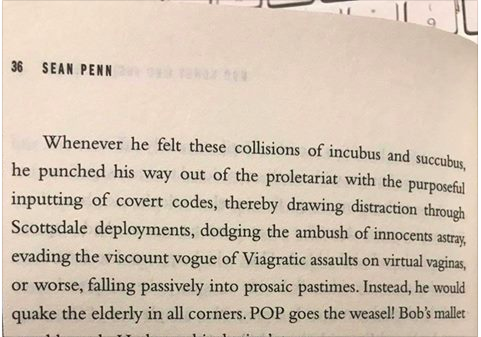
***Word on the street is the NSA is contemplating either revoking Sean Penn’s permission to own a thesaurus OR they want to weaponize his writing.
Metaphors and similes are fantastic literary devices, but need to be used with intention. Yes, in school, our teachers or professors didn’t ding us for using forty-two metaphors in five pages, but their job was to teach us how to properly use a metaphor or simile, NOT prepare us for commercial publication as professional novelists.
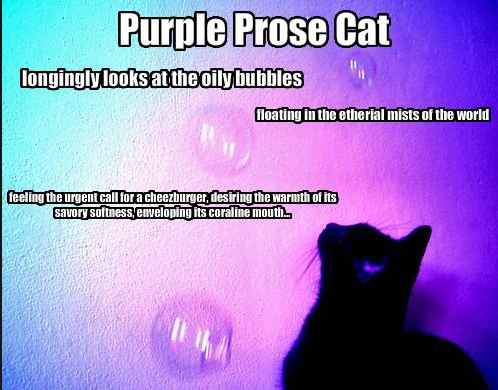
When we use too much of this verbal glitter, we can create what’s called ‘purple prose.’ Go through your pages and highlight metaphors and similes.
Pick THE BEST and CUT THE REST.
Any kind of description must serve the story and propel the dramatic action forward. If it doesn’t do this? CUT!
#3 Editing Out the Stage DirectionAgain, the more time an editor devotes to a project, the higher the bill. Also, if an editor charges by the page, we could be paying for a lot of filler we could have removed ourselves.
Alfred Hitchcock said, “Drama is life with the dull bits cut out.” Readers don’t need every single step of a day. We live it, why would we read it?
Yet, I see a lot of samples like this:
Fifi opened her eyes at dawn. She pulled back her covers and placed her feet on the floor. Padding across the room, she reached for a robe hanging on her door. Her stomach growled, so she went downstairs and opened the fridge for the carton of orange juice, then grabbed a glass from the cabinet. Turning around, she searched for a granola bar….OH, GET ON WITH IT!
An editor is going to cut all of this because NOTHING IS HAPPENING. Also, readers pretty much know how the whole ‘getting juice’ phenomenon works. They don’t need a blow-by-blow.
Fifi reached out her hand to open the door.
NO KIDDING.
Unless Fifi has telekinetic powers, do readers need the direction?
Filler pads the word count, but it also pads the editing bill. The verbs turn, look, grab, pull are possible red flags you’re doing too much stage direction. My advice is to do a Word Find and search for these verbs and their variations (I.e. look, looked, looking). See if the action is necessary or if you’re holding the reader’s brain.
If you’re holding the reader’s brain? Return it, please.
#4 Beware of Painful & Alien Movement of Body PartsHer eyes flew to the other end of the restaurant.
He dropped his head.
Um…ouch.
Make sure your character keeps all body parts attached. Her gaze can follow a person and so can her stare, but if her eyes follow? The carpet gets them fuzzy with dust bunnies and then they don’t slide back in her sockets as easily.
 #5 Ease Up on the PhysiologyFifi’s head pounded. She ran for the door, her heart hammering and wild pulse beating relentlessly in her head. Her breath came in choking sobs. All she could do was gasp. Panic made her throat clench and stomach heave. Mind numb, she reached for the door, fingers trembling.
#5 Ease Up on the PhysiologyFifi’s head pounded. She ran for the door, her heart hammering and wild pulse beating relentlessly in her head. Her breath came in choking sobs. All she could do was gasp. Panic made her throat clench and stomach heave. Mind numb, she reached for the door, fingers trembling.GET TO IT ALREADY!
After a page of this? I need a nap. After two pages? I need a drink. We can only take so much heart pounding, thrumming, hammering before we just get worn out. That and I read a lot of samples where the character has her heart pounding so much, I’m waiting for her to slip into cardiac arrest at any moment.
Physiological reactions can become echoes. If every page the character has her stomach churning, roiling and rolling, our reader will need an antacid before finishing the chapter (provided she finishes at all).
I strongly recommend a copy of Angela Ackerman and Becca Puglisi’s Emotion Thesaurus to help you vary physiology. Also, if someone’s heart is pounding, that’s okay. We just don’t need to be told this over and over and…over.
We (readers) assume the character’s heart is still pounding until she’s out of danger.
No need to remind us.
Really.
#6 Editing Out Odd Sentence Construction Ummm…?
Ummm…?In an effort to break up and vary sentence structure, many emerging writers will craft sentences like this:
With the months of stress pressing down on her head, Jessie started ironing the restaurant tablecloths with a fury.
First, this is backing into the action. Though technically correct (enough), it’s easy to lose a reader if we have too many sentences like this. Active sentences are the easiest on the brain and keep the reader immersed in the fictive dream.
Then there are the picky issues with the example above. For instance, when we use the word ‘down,’ then ‘on’ is redundant.
Also, Jessie is either ironing or not ironing. ‘Started’ is overused and makes sloppy writing (this actually goes back to the whole stage direction thing).
Jessie ironed the restaurant tablecloths with a fury, months of stress pressing on her shoulders.
Another way writers will vary the beginning of sentences is they’ll default to what’s known as passive voice.
Passive:
The door was kicked in by the EMTs.
Active:
EMTs kicked in the door.
If you go through your pages and see WAS clusters? That’s a HUGE hint that passive voice has infected your story.
Many writers end up with strange sentence construction because they realize every sentence is starting with the character’s name or the appropriate pronoun. They’re trying to ameliorate the repetition of Jessie, Jessie, Jessie, she, she, she. The problem, then, is not sentence construction, rather the writer needs to open the lens of the storytelling.
Remember our character doesn’t need to be the subject of every sentence. We’re telling a story. This means we can work with setting, other characters, etc.
#7 Get Rid of ‘Clever’ TagsIdeally, if we do a good job with our characters, the reader should know who’s talking without tags because speech patterns differ. If all our characters ‘speak’ the same way, that is an issue we need to remedy.
We can’t always do this, which means we can use a tag. Tags are fine, but keep it simple. This isn’t the place to get clever.
‘You are such a jerk,’ she laughed.
A character can’t ‘laugh’ something. They can’t ‘spit,’ ‘snarl,’ or ‘grouse’ words either. They can SAY and ever so often they can ASK. Said used properly becomes white noise.
NOTE: Use said as a tag…just don’t get crazy. If you beat it up, it also gets distracting and annoying.
But again, used properly readers don’t generally see it. It keeps them in the story and cooking along. If we want to add things like laughing, griping, complaining, then fine. It just generally shouldn’t be the tag.
“You are such a jerk.” She laughed and flicked brownie batter onto Fabio’s white shirt.
Notice how sentences like the one above also keep us from beating said to death?
I swear the funniest instance of bizarre tags was a new writer who just would NOT listen to me and she insisted on using all these crazy tags. So instead of exclaimed when her character yelled something, she tagged with…he ejaculated.
*Editor Kristen falls over laughing*
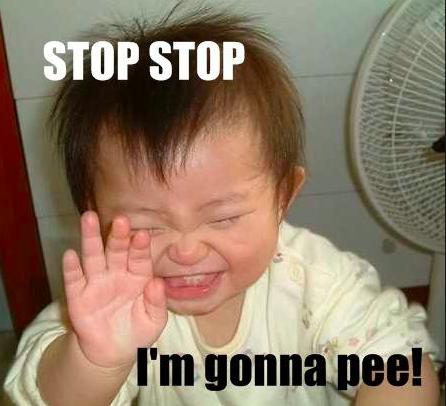
Okay y’all ALL sniggered at that one. Feel free to be creative just not in the tags, ya dig? 
One thing I will promise y’all ahead of time is there really is only one way to find all the typos. Publish your book. Seriously. Before I became a professional author, I was super judgy about typos. Now? If I get through a book and there are only a handful of oopses? That is an AWESOME book. Especially if the book is longer…like 91,000 words.
Maybe I am wrong and I wish all of you a perfect book, but I am still going to offer some hacks I’ve learned over the years.
One of the reasons it is almost impossible to edit our own work is we have SEEN our own writing SO many times, our brains insert what should be there instead of seeing what is actually on the page. We become blind to our own errors.
Here are some tricks to help y’all SEE.
One, is to change the font. Sometimes shifting from Times New Roman to, say, Courier, or Callibri can help. There is also a downloadable font for people who are dyslexic that is AWESOME.
Another trick is to change the color of the background. When I switch to white letters on a black background, a lot of the repeated words, floating commas, and homeless punctuation practically leaps off the page.
There is also a function in Word that will read your manuscript aloud to you. It certainly isn’t going to sound like Simon Vance, but hearing the words will help you pick up echoes, passive voice, weird sentence construction and the like.
I LOVE Hearing from Y’all! What are Your Thoughts?I know there was a lot in today’s post, but I wanted to offer y’all a comprehensive reference. There are plenty of books I can recommend in a later post, but this hit a lot of the high points…and I added in stuff I have learned from years of trial and error.
What are your questions? Suggestions for topics? Thoughts, problems, ways you’ve figured out how to self-edit?
***FYI: Back in May, I offered my reward for commenting. The next day, I found out my mom had to go in for emergency cancer surgery. She is fine, but I had to stay with her almost two weeks and everything went sideways being away.
SO…May’s winner is Katherine Smits. CONGRATULATIONS! E-mail me at kristen at wana intl dot com. I need your pages in Word, double-spaced, one-inch margins, and 250 words is considered a ‘page.’ Feel free to go a little over if you need to finish a thought or paragraph, just don’t get crazy  . Please put CONTEST WINNER in all caps in the header of the email so I can FIND you. Being gone so long, my email has gone a tad feral.
. Please put CONTEST WINNER in all caps in the header of the email so I can FIND you. Being gone so long, my email has gone a tad feral.
What do you WIN? For the month of JULY, for everyone who leaves a comment, I will put your name in a hat. If you comment and link back to my blog on your blog, you get your name in the hat twice. What do you win? The unvarnished truth from yours truly. I will pick a winner once a month and it will be a critique of the first 20 pages of your novel, or your query letter, or your synopsis (5 pages or less).
The post Why Editing Matters & Simple Ways to Make Your Work SHINE appeared first on Kristen Lamb.
July 7, 2021
The Burning Desire: The Difference Between Magnificent & Maddening

The burning desire is the beating heart of all great stories. Without the burning desire, the story will fall apart faster than a reality star who’s lost her hair extensions.
We’ve discussed story structure more times than I can count on this blog, and for good reasons. When we understand the fundamental parts of story and how they work, why they work, etc. THEN when something seems ‘off’ we possess the knowledge base and vocabulary to detect WHY the story isn’t working then fix it.
The Burning Desire for the BBT
I know it’s been a while, so super quick review. The first crucial ingredient for any story is a core antagonist to create the main problem in need of resolution by the time we reach THE END.
Since the whole ‘antagonist’ concept tied my brain in knots for YEARS, I finally invented my own term—Big Boss Troublemaker (BBT).
Why?
Because every story must have a core antagonist or, by definition, it isn’t a story.
That said, not all antagonists are villains. Villains are only one type of antagonist. Very useful in thrillers, horror, mystery, science fiction, and the like, but not so much in general fiction or literary fiction.
To understand more what I mean about the BBT, feel free to go HERE. If we fail to understand the BBT, then frankly the burning desire is a moot point.
While all stories must have a core antagonist (BBT), that alone isn’t enough. We must also figure out what drives the BBT. What is the burning desire fueling the goal that will eventually come at odds with the protagonist and (eventually) create a hero?
If we look back at some of the most iconic books, movies and series, we will see the writers NAILED the burning desire.
***I’ve detailed this on posts about real ‘flesh and blood’ villains, but also when we have a BBT that might be more everyday or existential.
Again, in the essence of time, I recommend taking a look at the posts I’ve hyperlinked.
BBT Burning Desire Done WELLIn this section, we’ll talk about some excellent examples from film as well as literature.
Fahrenheit 451 As all the authors scream… (Image courtesy of HBO)
As all the authors scream… (Image courtesy of HBO)Ray Bradbury’s classic Fahrenheit 451 is an incredible, but terrifying, example of Man-Versus-Society. The BBT is a totalitarian government embroiled in endless (and pointless) wars. To keep the population from asking too many questions the government doesn’t want to answer…books are illegal.
The fire department, in this world, doesn’t exist to put out fires, rather to start them. A fireman’s goal is to hunt down any ‘offenders’ (people hoarding books), burn their stockpile, and possibly arrest them for crimes against the State.
IF, however, you read Fahrenheit 451, not ALL books are illegal. Only books deemed dangerous enough to encourage people to think, feel and, worst of all…QUESTION.
 Nooooo! No stepping on the BOOKS! (image courtesy of HBO)
Nooooo! No stepping on the BOOKS! (image courtesy of HBO)For a totalitarian government with a goal to keep people distracted and placated with fluff and nonsense, certain literary and cultural writings are deemed a direct threat to their agenda….ABSOLUTE CONTROL.
If people read, and maybe begin to think critically, then they might stop blindly gobbling down all the propaganda. Should that happen, then the powers that be could possibly lose power and—GASP—be held accountable.
Since it would be boring or even confusing for our fireman, Guy Montag (the protagonist) to simply ‘war with society,’ Bradbury gives us a proxy to represent the system…Montag’s mentor, father figure and closest friend Captain Beatty.
Montag’s desire to think for himself, to ponder the why of his world and be allowed to challenge the status quo comes in DIRECT conflict with Captain Beatty’s goal of keeping society ‘happy.’
Beatty remembers earlier times of complete social unrest bordering on anarchy, record rates of crime, suicide, depression, etc. and he genuinely believes people are better off ‘keeping it light.’
Bad pun. Oops.
I, Robot Image courtesy of 20th Century Fox
Image courtesy of 20th Century FoxThe movie I, Robot was actually based off a collection of Isaac Asimov’s short stories and essays that questioned humanity’s increasing reliance on technology, robots in particular. How much free will were we blindly handing away in the name of convenience? What would be the ultimate consequence? Could the veritably sacrosanct Three Laws of Robotics be fully trusted?
Our protagonist, Detective Del Spooner, loathes technology, robots in particular. When a robot allegedly murders the leading scientist in the field of robotics (Dr. Alfred Lanning), Spooner believes he has all the proof he needs. Robots not only cannot be trusted, but they are dangerous and even deadly.
The ‘mind’ responsible for driving all the robots and their protocols is VIKI (Virtual Interactive Kinetic Intelligence). VIKI is there to ensure all robots adhere to the Three Laws of Robotics, so how can Spooner explain a robot directly defying the law dictating that no robot can harm a human?
 Meet…VIKI. (Image courtesy of 20th Century Fox)
Meet…VIKI. (Image courtesy of 20th Century Fox)It has to do with the burning desire. Granted, we are referring to an artificial intelligence. In Spooner’s mind, robots are fancy toasters, nothing more. What if, however, he’s wrong?
At what point do we—humans—create artificial intelligence that crosses over into a sentient creature that can reason?
Back to the burning desire. VIKI has been around long enough, observed human behavior long enough, that ‘she’ decides to make some changes. What Spooner comes to realize is that VIKI, and the legions of robots locking people in their homes, are technically ‘innocent.’
All three laws hinge on the first:A robot may not injure a human being or, through inaction, allow a human being to come to harm.
Isaac Asimov
Since VIKI witnesses that we—humans—can’t be trusted with so much as a swizzle stick, she decides to take the strictest interpretation of the law. By locking humans up at home and policing our every move, VIKI is making sure no human comes to any harm. Technically a noble goal, but…*runs screaming*
Ultimately, VIKI was only doing exactly what we humans asked her to.
When The Burning Desire Fizzles
Whether our story involves a serial killer, a society-gone-sideways, a power-hungry ruler, artificial intelligence, or even a well-meaning mother-in-law, the burning desire MUST pass muster.
When the burning desire is weak, absurd or outright STUPID, it wrecks the story. I’ve spent many years as an editor, teacher, story doctor, you name it. The two issues most new writers will run into are:
Failing to even HAVE a BBT, which devolves the ‘story’ into a frustrating series of ‘bad things happening.’ Readers/viewers will stagger away wondering what was the POINT?If a writer does have a BBT, then the motivations are nonexistent, weak, nonsensical or downright lame.Too many times, I’ve worked with new authors who are on the verge of tears when, to me, the problem was clear. The burning desire is missing or fizzling.
For instance, a sorceress wants to bridge two dimensions bringing hell to Earth. Okay. cool. But WHY? Why would she do that? A maniacal tyrant who simply wants to see the world implode. Fine, but again…um, why?
Joker & Hipocrisy as the Burning Desire Image courtesy of IMDB & Warner Brothers)
Image courtesy of IMDB & Warner Brothers)We certainly can have a BBT content with self-immolation or the annihilation of others (even innocents). They can make for some of the most frightening villains.
It all hinges, however, on the WHY.
In The Dark Knight, Health Ledger-as-Joker demonstrated this CAN be done (and become the stuff of legends). Some men cannot be bought, cannot be reasoned with, and they simply want to see the world BURN.
Though Joker comes across as a total madman—and maybe he is—he’s also a master manipulator. His goal for wreaking havoc in Gotham is to force Batman’s hand, and ultimately test his nemesis’s convictions.
Is Batman a hypocrite like other ‘heroes’ in Gotham?
The Joker is a wildcard in gambling…and as a villain. This said, Joker promoting all-out anarchy actually does have a point. Batman believes he must protect the seemingly unassailable integrity of Gotham’s public hero, Harvey Dent. To do this, however, Batman ultimately must take the fall for blood that rightfully should have been on Dent’s hands.
For Batman to win, he must also lose.
Joker forces Batman into a no-win situation where our Dark Knight has to make the toughest decisions of all. In my POV, Joker maneuvers Batman into a final showdown that’s actually a stalemate.
And he succeeds brilliantly.
When it comes down to any antagonist (villain or otherwise), we simply need to ask:
What does the BBT stand to gain? Does their motivation merit the level of their actions?The Burning Desire Goes Emo: Horsemen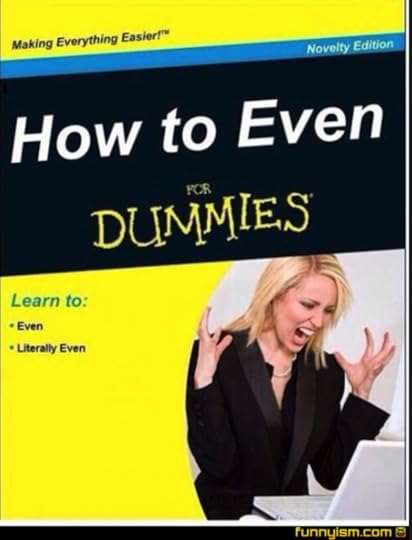
Last weekend I watched a movie called ‘Horsemen.’ In theory, this movie had all the elements necessary for a flick I would LOVE. It has a dynamite cast of actors, a fantastic premise, and appeared to run along the lines of Se7en.
It even had a great tag line:
A recently widowed detective still grieving over his wife’s death discovers a shocking connection between a serial killing spree and the Four Horsemen of the Apocalypse.
Premise for ‘Horsemen’
Okey, dokey. I am going to TOTALLY and UNAPOLOGETICALLY ruin this movie for you. Granted, I know not everyone likes dark serial killer movies with gore. I don’t necessarily have a problem so long as any violence ultimately has a POINT.
Horsemen is a great example of stupid, gratuitous violence…heavy emphasis on the stupid.
The protagonist, Detroit Detective Aidan Breslin, is a single dad rearing a teenage boy and a younger son after his wife’s untimely death from cancer. He’s a very sympathetic character, a man doing his best to balance home with work.
We also realize early on that there is a lot of tension at home, particularly with the teenager who resents his father for not ‘being there’ when his mother passed away…and for not being there in the years since. Fair point. Makes for a layered protagonist.
Breslin is already emotionally shredded and spread too thinly. The last thing he needs is a serial killer. Not a serial killer, but seemingly a group killing for some unknown (but vague and ‘biblically’ referenced agenda). And they don’t settle for killing innocent people…they butcher them.
By this point, I am all, ‘Meh, fine. Worked in Se7en. See where this goes.’
Where did it go?
Welcome to the Land of STUPID Image courtesy of IMDB
Image courtesy of IMDBCome and See. Better still? Don’t.
By the time we are into Act Two (Warrior), Breslin knows they are dealing with a group of murderers trying to make a statement. There are (allegedly) four killers, each representing one of the four horsemen from Revelations: Red (War), Green (Pestilence), Black (Famine) and White (Conquest).
There is no need to go into detail because, bluntly, it was beyond absurd. Suffice to say the Horsemen have some sort of justification for slaughtering regular people who’ve committed no crime. Must be a big deal, right?
Nope.
I’ll only concern myself with the White Horseman for a number of reasons. Mostly because I have a limit on how much idiocy I can handle, but also because the White Horseman is supposed to be the biggest and baddest of the bunch—the leader and thus our BBT.
….and it’s the detective’s son.
The burning desire that justifies wholesale butchery of innocent people is….*drum roll*
Daddy wasn’t there for him enough.
*primal screaming*

His father is a detective in one of the most crime-riddled cities in the U.S. and wasn’t there when his mother died. Um, maybe because Dad had to pay the bills for like food, shelter and health insurance? And Dad wasn’t there enough after Mom died. Again, he is grieving and remember he is a HOMICIDE DETECTIVE?
So the son’s great plan is this. His dad is absentee because he’s too busy solving murders, bringing comfort to grieving victims and the bad guys to justice.
What would be a great idea?
Go on a killing spree that um…makes your father keep having to ditch you to find out WHO is committing these heinous murders.
*rails at the heavens*
Finding the Balance…in a GOOD Way
Hopefully I’ve offered a nice selection of books/movies where the burning reason was done well. It’s tougher to find examples of when it’s botched because these books, movies and series are often forgotten for this very reason.
***I have a rant somewhere in the archives about the Pixar disaster we know as Finding Dory, but have too many posts and can’t find it  .
.
There is a sweet spot when it comes to finding that burning reason for our story to exist. If the burning desire is missing, vague, overly complicated or absurd, that is a formula for a reader to toss a book across the room.
Or post a blog/rant about a movie/series.
In Horsemen, the screenwriters possibly could have salvaged the movie, but it’s very unlikely. If the writers wanted the White Horseman to have a cause worthy of the crimes committed, they’d have had to ditch their little darling….having the BBT puppet master being the detective’s son.
To make the BBT the detective’s son, would have meant sacrificing the protagonist and having no ‘hero.’ This makes my point that when we understand what makes a great story, we can fix it before it’s too late.
Had the Horsemen screenwriters asked the really tough questions, they could have had a contender. Actually, was a simple fix, but we might talk about that next time  .
.
I know I’ve been away far too long, and I missed y’all! Mom and Hubby both had emergency surgeries, I cracked two back teeth, had to get in all my work on this last book that was 91,000 words with at least 125 citations and AHHHH!
I was just beyond burned out. Thanks for being so patient. It gave me space to refill my mental and emotional reserves. These posts take a lot of time and research.
But back to this post.
What are your thoughts? Can you think of movies where you found yourself struggling with maybe ‘forgiving the unforgivable’ because the BBT had such a great burning reason? Like Hannibal Lecter in The Silence of the Lambs or Clyde Sheldon in Law Abiding Citizen?
What about movies, books, series that, like Horsemen, left you angry about losing hours of your life you can’t get back?
Also, I’d like to know what topics you might like me to cover, questions I might be able to answer, etc. I am rusty so suggestions are AWESOME!
I’ve missed y’all a ton and eager to get back in the groove.
The post The Burning Desire: The Difference Between Magnificent & Maddening appeared first on Kristen Lamb.
May 14, 2021
The Writer’s Journey: From Total Newbie to the Joy of Mastery

Mastery is peculiar in that spectators see whatever the professional does as ‘easy.’ Masters rarely seem to even break a sweat, whether they’re dancers, authors, or entrepreneurs. What they do seems so natural that it’s easy for us to be fooled into believing we could do the same right off the bat.
Sure.
I recently signed up for a watercolor workshop. Years ago, I dabbled for fun painting in acrylics, but I’ve always heard how watercolor is among the most challenging mediums. With running a business, writing, homeschooling my young son, taking care of my aging mother, etc. I needed a hobby and a time and place to simply chill.
Bwa ha ha ha ha ha ha!
Oh how my Type A personality loves to muck things up. It’s taking everything for me to RELAX, let go and simply give myself permission to be NEW. My teacher has painted thousands of watercolors and is arguably one of the top masters in the country. It takes all I have to not compare my rookie attempt to his version he seems to produce without even having to actually focus.
***A skill earned through many years, countless of hours of practice, and training.
Same with authors. With the pros? Their stories flow, drag readers in like an unseen riptide only to release the exhausted and elated audience at The End.
Mastery, to the casual observer, appears seamless and effortless.
Everyone Begins Somewhere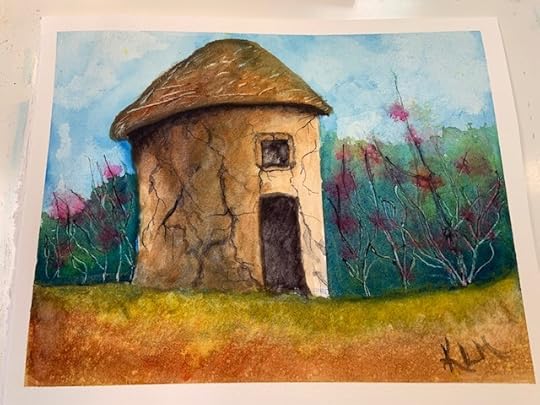
My very first watercolor. A pigeonnie…or a mushroom house for fae, LOL.
I’d like to offer a glimpse of what the journey from N00b to Master is really like so you can set expectations accordingly. This will keep you pressing, and from being too hard on yourself. First and foremost, it’s vital to relax and keep reminding yourself that your journey has only just begun.
Many of us decided to become writers because we grew up loving books. Because good storytellers are masters of what they do, it’s easy to fall into a misguided notion that ‘writing is easy,’ which explains the mountains of crappy ‘published novels’.
It also explains why non-writers can so easily dismiss what we do. As if the only thing keeping them from turning out the next Game of Thrones is ‘finding the time’ and not a matter of a crap ton of training and work.
Granted there are a rare few exceptions—the born ‘genius’—but most of us will go through three acts (stages) to attain mastery in this career…if we stick it through.
Act One: The Newbie
My SECOND watercolor. The back of a church in autumn. Yeah….
It’s far easier and less painful to show you my first watercolors than to torture y’all with my first attempts at writing.
The Newbie Phase is FUN! This is when we are brand new. We’ve never read a craft book and the words flow. We never run out of words to put on a page because we are like a kid slapping watercolor paints everywhere making ‘art’…and a mess. We aren’t held back or hindered by any structure or rules. Unworried about light, symmetry, technique, it’s easy to feel alive, brimming with energy and passion.
But then we have our first real writing critique and hear words like ‘POV,’ ‘character arc,’ and ‘narrative structure.’ Critique members return samples of our opus hemorrhaging red ink. It’s in this moment, we learn maybe we’ve not yet achieved mastery.
In fact maybe, just maybe we’ll see we don’t know as much as we think we do. Also *winces* we might become aware we are not so ‘naturally gifted’ that we get to skip all the training and the hard stuff.
This is writing, not a theme park. There are no instant passes to the front of the line.
It’s during this period we might also grow keenly aware of why so many famous authors drank…a lot. Or went crazy.
Act Two: The Apprentice

The Apprentice Phase comes next. This is where we might read craft books, take classes, go to conferences and listen to lectures. During the early parts of this phase, books likely will no longer be fun. Neither will movies. In fact, expect most of your family to ban you from ‘Movie Night.’ Everything now becomes part of mastery training. We no longer look at stories the same way.
The Apprentice Phase is tough, and for many of us, it takes the all the fun out of writing. The Apprentice Phase is our Act II. It’s the looooongest, but filled with the most growth and change.
It’s the span of suck before the breakthrough.There is a darn good reason WHY not everyone can do what WE DO.
If Mastery is TOUGH, Writing is Tougher
Yes, I practiced feathers for two hours.
Many new writers will shy away from craft books because they fear ‘rules’ will ruin their creativity. Truth is? They will totally ruin our creativity, but only for a little while  .
.
It isn’t permanent. Give yourself a bit of grace.
Eventually we realize that rules were made to be broken. BUT, the difference between the artist and the hack is that the artist knows the rules and thus HOW to break them and WHY and WHEN. We start to see rules as tools.
This is why it is absolutely essential for authors to READ everything we can get our hands on. Read everything in your genre and even out of it. The more you read the more colors and techniques you add to your creative palette.
Then APPLY this and PRACTICE. Learn from others about mastery and follow the paths they’ve already forged until you’re skilled enough to set out on your own. Repetition and refinement are essential for improvement. We’ll never attain mastery without the ‘drudgery.’
For instance, I was pretty tired yesterday after my art class. I’d already edited at least 150 pages this week (the final line-edits for my ghostwriting project). My brain needed a rest, but no reason that could be active rest. I took scraps of watercolor paper and simply practiced.
I painted leaves, feathers, fish, kelp, branches, whatever would fit on a small square of paper. They suck. There is nothing fancy, sexy or exciting about leaves, feathers and fish. But I need to practice the simple if I ever hope to learn anything complex. I’m new. I’m learning how to chill out and enjoy the rote, ‘un-fun’ aspects of learning something different.
This early joy is too often missing in the modern publishing paradigm. We believe our first attempt at writing a novel should rival what took other authors decades to master. If our first attempts aren’t making us multi-millionaires, then we’re a failure.
In what other profession would this thinking make ANY sense? Doctors ‘practice’ medicine. Attorneys ‘practice’ law. Our culture acknowledges that a junior attorney or new doctor might have fresh insight, but that their skills will only improve with time because time hones raw skill into the sharpened blade of instinct.
No one expects a painter’s FIRST painting to make them a legend, so ease up on yourselves. Learning will go much faster if we’re having fun.
Learning FLOWSome of you may know I practiced Brazilian Jiu Jitsu for years. One exercise we did to improve our skills was to grapple blindfolded. The trick was to not get fixated visually, but to be able to feel what our opponent was up to, where he was headed and move like water. By being relaxed, it made it next to impossible for an opponent to sink in the hold, choke, arm bar, whatever.
Wherever our opponent was headed, we were already two steps ahead by FEEL. THAT is how sensitive you want to become in Jiu Jitsu…and in writing.

We want to become so immersed that we can do this stuff blindfolded. We instinctively feel what needs to happen where without having to say ‘Oh, this is a scene, and this is a sequel.’
As we move through the Apprentice Phase and we train ourselves to execute all these moves together—POV, structure, conflict, tension, setting, description, dialogue, plot arc, character arc—it eventually becomes easier. In fact, a good sign we are at the latter part of the Apprentice Phase is when the rules become so ingrained we rarely think about them.
We simply write.
Mastery Has a ‘Feel’

We’ve read so much fiction, watched (and studied) so many movies, read so many craft books, heard so many lectures, and practiced so much writing that all the ‘rules’ are now becoming instinct and, by feel, we are starting to know where and how to bend, break or ignore them.
Like anything, there is NO substitute for DOING. Watching Holly Holmes videos is a good idea for understanding ground-fighting, but it can’t take the place of mat time. Reading, taking classes, studying cannot replace writing crap until we don’t write crap anymore.
At the end of the Apprentice Phase, writing is now starting to become fun again. Kind of. Like the fighter who instinctively knows to arm bar an opponent without conscious thought, the artist who intuitively knows how to use light, authors nearing the ‘mastery’ level now find more and more of the ‘right’ words and dramatic timing without bursting brain cells.
The trick is sticking it through the Apprentice Phase long enough to engrain the fundamentals into the subconscious. This is how we get ever closer to mastery.
Master
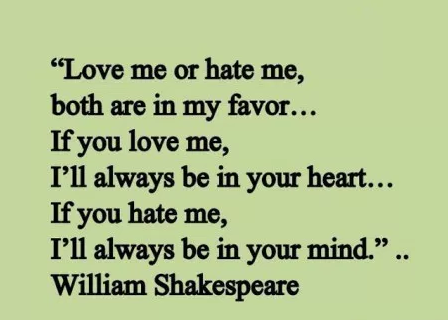
This is where we all want to be. We all want this on Day One, but sadly, I believe this Day One Master is reserved for only a handful of literary savants. Mastery is when we return to that childlike beginning. We write with abandon and joy and, since the elements of fiction are now part of our DNA, our literary marrow, what we produce isn’t the muddled mess of a neophyte. It’s actually a real story worth reading.
Granted, it isn’t all kittens and rainbows. Masters have a lot of pressure to be perpetual geniuses.
I believe most of us, if we stick to this long enough, will always be vacillating between the Advanced Apprentice Phase (Journeyman) and the Mastery Phase. If we choose to try a totally new genre, we might even be back to Newbie (though this will pass more quickly than the first time).
We have to to keep growing. The best writers still pick up craft books, refresh themselves in certain areas, read other authors they enjoy and admire to see if they can grow in some new area. Masters seek to always add new and fresh elements to the fiction.
Simple Steps to Mastery
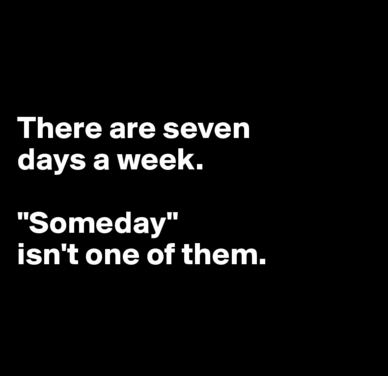
1. Embrace the Day of Small Beginnings—Starting is often the hardest part. Enjoy being new. Enjoy that feeling because you will reconnect with it later because you’ll recognize it.
2. Understand We All Have an Apprentice Phase—We will all be Early, Intermediate, then Advanced Apprentices. How quickly we move through these will be dictated by dedication, hard work and, to a degree, natural talent.
3. No One Begins as a Master and Few Remain Permanent Masters—Every NYTBSA was once a newbie. When we understand this career has a process, it’s easier to lighten up and give ourselves permission to be imperfect, to not know everything. Many writers get discouraged and give up too soon because they don’t understand there is a process, and they believe they should be ‘Masters’ right away.
Hey, I did.
We need to give ourselves permission to grow. If we love and respect our craft, we will always be learning, so we will continue to dip back into ‘Apprentice’ to refine our art even further. We might read older works of literature, explore other genres, write a genre we never cared for to test ourselves.
What Are Your Thoughts?Does this make you feel better to know this career has a process? Are you in the Act II span of suck and getting weary? It is okay, REALLY! It’s natural. What are you doing to remain focused? Which part has you the most discouraged? Write with the abandon of the Newbie then edit with the eyes of an Advanced Apprentice or Master  .
.
I love hearing from you and am not above bribery!
What do you WIN? For the month of MAY, for everyone who leaves a comment, I will put your name in a hat. If you comment and link back to my blog on your blog, you get your name in the hat twice. What do you win? The unvarnished truth from yours truly. I will pick a winner once a month and it will be a critique of the first 20 pages of your novel, or your query letter, or your synopsis (5 pages or less).
The post The Writer’s Journey: From Total Newbie to the Joy of Mastery appeared first on Kristen Lamb.



